文章
ritau
2020年08月12日

1. Test the soil every day before you water the plant. Stick your finger 1 inch (2.5 cm) into the soil to feel for moisture. If it feels dry or if you rub your fingers together and see bits of dry soil flaking off, it's time for a good watering.
-If it's damp, wait 12 to 24 hours before checking the soil again.
-Daily watering is especially important during hot summer months.
-Most fuchsias like to be watered every day, but under or over-watering can cause the leaves to wilt so it's wise to check the soil first.
-Hanging baskets dry out faster than standing pots, so you may need to test the soil twice a day (especially on hot or dry days).
2. Pour water onto the soil until it drains from the bottom of the pot. Start by pouring water onto the base of the plant and then water the entire surface of the soil. Keeping pouring until you notice water dribbling out of the bottom of the pot.
-The goal is to keep the soil evenly moist but not sopping wet.
-If you don't see water coming out of the drainage holes, they may be clogged or the soil may not be draining properly (in which case, you should re-pot the plant).
3. Water the plant 2 to 3 times a week in the fall. Once summer is over, start watering your fuchsia plant every other day or just twice a week. Always test the soil with your finger first—if it's bone dry, go ahead and water it. If it's even the slightest bit damp, wait another day and check again.
Withholding water in the fall will prepare the plant for winter dormancy so it can reenergize and grow beautiful blooms in the spring!
4. Limit your waterings to 8 fl oz (240 mL) every 3 to 4 weeks in the winter. Let the soil get relatively dry starting in mid-November to early March (the exact months will vary depending on where you live). A good rule of thumb is to water it with 8 fluid ounces (240 mL) of water every 3 weeks or each month, but you can also feel the soil with your finger to see if it's bone dry. If it is, go ahead and water it and wait another 3 to 4 weeks before watering it again.
The plant will be in its dormant phase during the winter and your job is to make sure the soil doesn't get dusty-dry—a little dry is okay.

5. Fertilize the plant once a week during spring and summer months. Use a fertilizer with equal parts nitrogen, phosphorus, and potassium—a 20-20-20 or 16-16-16 blend is perfect. The amount of fertilizer you need to use depends on the size of the pot, but you should always read the instructions on the package.
-For instance, if you're fertilizing a 12 in (30 cm) pot, you might use 7 drops of liquid fertilizer for each 33 fluid ounces (980 mL) of water or sprinkle 3 to 4 tsp (15 to 20 g) of granular fertilizer on top of the soil.
If your plant is outside, stop fertilizing it 2 weeks before you bring it inside for the colder months.
Bone meal also makes an excellent fertilizer for fuchsia. You can buy it at any garden supply store.
-If it's damp, wait 12 to 24 hours before checking the soil again.
-Daily watering is especially important during hot summer months.
-Most fuchsias like to be watered every day, but under or over-watering can cause the leaves to wilt so it's wise to check the soil first.
-Hanging baskets dry out faster than standing pots, so you may need to test the soil twice a day (especially on hot or dry days).
2. Pour water onto the soil until it drains from the bottom of the pot. Start by pouring water onto the base of the plant and then water the entire surface of the soil. Keeping pouring until you notice water dribbling out of the bottom of the pot.
-The goal is to keep the soil evenly moist but not sopping wet.
-If you don't see water coming out of the drainage holes, they may be clogged or the soil may not be draining properly (in which case, you should re-pot the plant).
3. Water the plant 2 to 3 times a week in the fall. Once summer is over, start watering your fuchsia plant every other day or just twice a week. Always test the soil with your finger first—if it's bone dry, go ahead and water it. If it's even the slightest bit damp, wait another day and check again.
Withholding water in the fall will prepare the plant for winter dormancy so it can reenergize and grow beautiful blooms in the spring!
4. Limit your waterings to 8 fl oz (240 mL) every 3 to 4 weeks in the winter. Let the soil get relatively dry starting in mid-November to early March (the exact months will vary depending on where you live). A good rule of thumb is to water it with 8 fluid ounces (240 mL) of water every 3 weeks or each month, but you can also feel the soil with your finger to see if it's bone dry. If it is, go ahead and water it and wait another 3 to 4 weeks before watering it again.
The plant will be in its dormant phase during the winter and your job is to make sure the soil doesn't get dusty-dry—a little dry is okay.

5. Fertilize the plant once a week during spring and summer months. Use a fertilizer with equal parts nitrogen, phosphorus, and potassium—a 20-20-20 or 16-16-16 blend is perfect. The amount of fertilizer you need to use depends on the size of the pot, but you should always read the instructions on the package.
-For instance, if you're fertilizing a 12 in (30 cm) pot, you might use 7 drops of liquid fertilizer for each 33 fluid ounces (980 mL) of water or sprinkle 3 to 4 tsp (15 to 20 g) of granular fertilizer on top of the soil.
If your plant is outside, stop fertilizing it 2 weeks before you bring it inside for the colder months.
Bone meal also makes an excellent fertilizer for fuchsia. You can buy it at any garden supply store.
0
0
文章
ritau
2020年08月05日

Mimosa pudica (from Latin: pudica "shy, bashful or shrinking"; also called sensitive plant, sleepy plant, action plant, Dormilones, touch-me-not, shameplant, zombie plant, shy lady or shy plant) is a creeping annual or perennial flowering plant of the pea/legume family Fabaceae and Magnoliopsida taxon, often grown for its curiosity value: the compound leaves fold inward and droop when touched or shaken, defending themselves from harm, and re-open a few minutes later. In the UK it has gained the Royal Horticultural Society's Award of Garden Merit.
The species is native to South and Central America, but is now a pantropical weed, and can be found in Southern United States, South Asia, East Asia and South Africa as well. It is not shade tolerant, and is primarily found on soils with low nutrient concentrations Mimosa pudica is well known for its rapid plant movement. Like a number of other plant species, it undergoes changes in leaf orientation termed "sleep" or nyctinastic movement. The foliage closes during darkness and reopens in light. This was first studied by the French scientist Jean-Jacques d'Ortous de Mairan. Due to Mimosa's unique response to touch, it became an ideal plant for many experiments regarding plant habituation and memory.
The stem is erect in young plants, but becomes creeping or trailing with age. It can hang very low and become floppy. The stem is slender, branching, and sparsely to densely prickly, growing to a length of 1.5 m (5 ft).
The leaves are bipinnately compound, with one or two pinnae pairs, and 10–26 leaflets per pinna. The petioles are also prickly. Pedunculate (stalked) pale pink or purple flower heads arise from the leaf axils in mid summer with more and more flowers as the plant gets older. The globose to ovoid heads are 8–10 mm (0.3–0.4 in) in diameter (excluding the stamens). On close examination, it is seen that the floret petals are red in their upper part and the filaments are pink to lavender. Pollens are circular with approximately 8 microns diameter.
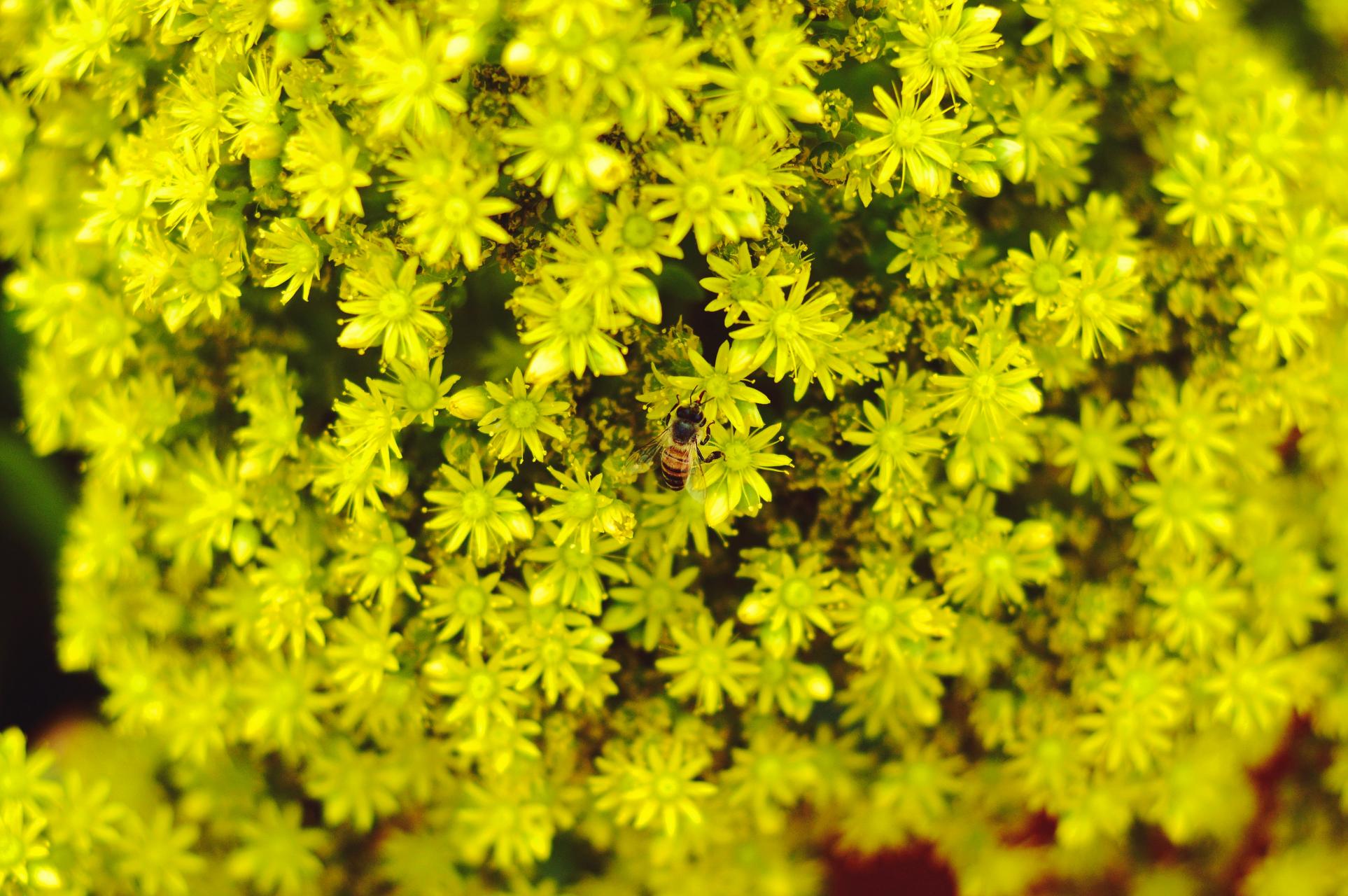
The fruit consists of clusters of two to eight pods from 1–2 cm (0.4–0.8 in) long each, these being prickly on the margins. The pods break into two to five segments and contain pale brown seeds about 2.5 mm (0.1 in) long. The flowers are insect pollinated and wind pollinated.The seeds have hard seed coats which restrict germination and make osmotic pressure and soil acidity less significant hindrances. High temperatures are the main stimuli that cause the seeds to end dormancy.
The roots of Mimosa pudica create carbon disulfide, which prevents certain pathogenic and mycorrhizal fungi from growing within the plant's rhizosphere. This allows the formation of nodules on the roots of the plant that contain endosymbiotic diazotrophs, which fix atmospheric nitrogen and convert it into a form that is usable by the plant.
Wilhelm Pfeffer, a German botanist during the 17th century, used Mimosa in one of the first experiments testing plant habituation.Further experimentation was done in 1965, when Holmes and Gruenberg discovered that Mimosa could distinguish between two stimuli, a water drop and a finger touch. Their findings also demonstrated that the habituated behavior was not due to fatigue since the leaf-folding response returned when another stimulus was presented.
Electrical signaling experiments were conducted on Mimosa pudica, where 1.3–1.5 volts and 2–10 µC of charge acted as the threshold to induce closing of the leaves. This topic was further explored in 2017 by neuroscientist Greg Gage who connected Mimosa pudica to Dionaea muscipula, better known as the Venus flytrap. Both plants had electrical wiring connecting them and were linked to an electrocardiogram. The results showed how causing an action potential in one plant led to an electrical response, causing both plants to respond.

Experiments were made on how anesthetics for animals could affect Mimosa pudica. These experiments showed that anesthetics cause narcosis of the motor organs, which was observed by the application of volatile ether, chloroform, carbon tetrachloride, hydrogen sulfide, ammonia, formaldehyde, and other substances.
In 2018, two research groups from the Universities of Palermo (Italy) and Lugano (Switzerland) demonstrated the feasibility of using such plant as a building block for creating plant-based controllable two-color displays, exploiting air jets instead of electrical or touch-based stimulation.
The species is native to South and Central America, but is now a pantropical weed, and can be found in Southern United States, South Asia, East Asia and South Africa as well. It is not shade tolerant, and is primarily found on soils with low nutrient concentrations Mimosa pudica is well known for its rapid plant movement. Like a number of other plant species, it undergoes changes in leaf orientation termed "sleep" or nyctinastic movement. The foliage closes during darkness and reopens in light. This was first studied by the French scientist Jean-Jacques d'Ortous de Mairan. Due to Mimosa's unique response to touch, it became an ideal plant for many experiments regarding plant habituation and memory.
The stem is erect in young plants, but becomes creeping or trailing with age. It can hang very low and become floppy. The stem is slender, branching, and sparsely to densely prickly, growing to a length of 1.5 m (5 ft).
The leaves are bipinnately compound, with one or two pinnae pairs, and 10–26 leaflets per pinna. The petioles are also prickly. Pedunculate (stalked) pale pink or purple flower heads arise from the leaf axils in mid summer with more and more flowers as the plant gets older. The globose to ovoid heads are 8–10 mm (0.3–0.4 in) in diameter (excluding the stamens). On close examination, it is seen that the floret petals are red in their upper part and the filaments are pink to lavender. Pollens are circular with approximately 8 microns diameter.

The fruit consists of clusters of two to eight pods from 1–2 cm (0.4–0.8 in) long each, these being prickly on the margins. The pods break into two to five segments and contain pale brown seeds about 2.5 mm (0.1 in) long. The flowers are insect pollinated and wind pollinated.The seeds have hard seed coats which restrict germination and make osmotic pressure and soil acidity less significant hindrances. High temperatures are the main stimuli that cause the seeds to end dormancy.
The roots of Mimosa pudica create carbon disulfide, which prevents certain pathogenic and mycorrhizal fungi from growing within the plant's rhizosphere. This allows the formation of nodules on the roots of the plant that contain endosymbiotic diazotrophs, which fix atmospheric nitrogen and convert it into a form that is usable by the plant.
Wilhelm Pfeffer, a German botanist during the 17th century, used Mimosa in one of the first experiments testing plant habituation.Further experimentation was done in 1965, when Holmes and Gruenberg discovered that Mimosa could distinguish between two stimuli, a water drop and a finger touch. Their findings also demonstrated that the habituated behavior was not due to fatigue since the leaf-folding response returned when another stimulus was presented.
Electrical signaling experiments were conducted on Mimosa pudica, where 1.3–1.5 volts and 2–10 µC of charge acted as the threshold to induce closing of the leaves. This topic was further explored in 2017 by neuroscientist Greg Gage who connected Mimosa pudica to Dionaea muscipula, better known as the Venus flytrap. Both plants had electrical wiring connecting them and were linked to an electrocardiogram. The results showed how causing an action potential in one plant led to an electrical response, causing both plants to respond.

Experiments were made on how anesthetics for animals could affect Mimosa pudica. These experiments showed that anesthetics cause narcosis of the motor organs, which was observed by the application of volatile ether, chloroform, carbon tetrachloride, hydrogen sulfide, ammonia, formaldehyde, and other substances.
In 2018, two research groups from the Universities of Palermo (Italy) and Lugano (Switzerland) demonstrated the feasibility of using such plant as a building block for creating plant-based controllable two-color displays, exploiting air jets instead of electrical or touch-based stimulation.
0
0
文章
ritau
2020年07月19日

Cacti are typically desert-dwelling plants that thrive in dry and hot conditions, but these plants also make excellent indoor houseplants. Cacti are quite low-maintenance and need less care than many other houseplants, making them an ideal plant for new gardeners and a great housewarming gift. The secrets to growing healthy cacti indoors include providing them with plenty of sunlight, not overwatering, and using the right soil.
1. Take a cutting from a healthy cactus. You can grow new cacti from a pup that shoots off of a healthy mother plant. Choose a pup that’s plump, unblemished, and healthy. Gently cut or break off an entire pup from the plant. You can also buy cacti at local nurseries, home stores, and garden centers.
2. Let the wound heal. Transfer the cutting to a sunny windowsill. Lay the cutting down flat and leave it for about two days. This will give the wound time to form a callous. If you don’t let the wound heal before planting, the cutting will likely rot.
3. Select a pot for the cactus. The most important thing to remember when choosing a pot for a cactus is drainage. Find a pot with drainage holes in the bottom that will allow excess water to drain out. Cacti also do well in smaller pots, so choose a pot that’s about twice the size of the plant. You can use clay or plastic pots for cacti. Plastic pots are lighter and cheaper, but heavier clay pots are better for large or top-heavy plants.

4. Fill the pot with a cactus-specific potting soil. Cacti need soil that drains very quickly, so choose a medium that’s specific for these types of plants. For even better drainage, mix two parts of the cactus potting soil with one part lava rock pebbles or pearlite.Cacti that sit in wet soil are prone to fungal and bacterial growth.
5. Plant the cutting in the soil. Place the stem or leaf cutting callous-down in the potting soil. Push the cutting in just deep enough so that it will stand up on its own. Use your hands to gently firm the soil around the cutting to stabilize it.
6. Mist the soil. Moisten the soil to provide the cactus with extra water, but don’t soak the soil. Until roots and new growth start to form, only mist the cutting lightly when the soil feels dry. Otherwise, the cutting may rot.
7. Keep the cutting in a bright location. Transfer the cutting to a windowsill or other area that gets lots of bright but indirect sunlight. Too much direct sun can damage a new cutting. Leave the cutting in this location for a month or two, until new growth starts to appear.

1. Take a cutting from a healthy cactus. You can grow new cacti from a pup that shoots off of a healthy mother plant. Choose a pup that’s plump, unblemished, and healthy. Gently cut or break off an entire pup from the plant. You can also buy cacti at local nurseries, home stores, and garden centers.
2. Let the wound heal. Transfer the cutting to a sunny windowsill. Lay the cutting down flat and leave it for about two days. This will give the wound time to form a callous. If you don’t let the wound heal before planting, the cutting will likely rot.
3. Select a pot for the cactus. The most important thing to remember when choosing a pot for a cactus is drainage. Find a pot with drainage holes in the bottom that will allow excess water to drain out. Cacti also do well in smaller pots, so choose a pot that’s about twice the size of the plant. You can use clay or plastic pots for cacti. Plastic pots are lighter and cheaper, but heavier clay pots are better for large or top-heavy plants.

4. Fill the pot with a cactus-specific potting soil. Cacti need soil that drains very quickly, so choose a medium that’s specific for these types of plants. For even better drainage, mix two parts of the cactus potting soil with one part lava rock pebbles or pearlite.Cacti that sit in wet soil are prone to fungal and bacterial growth.
5. Plant the cutting in the soil. Place the stem or leaf cutting callous-down in the potting soil. Push the cutting in just deep enough so that it will stand up on its own. Use your hands to gently firm the soil around the cutting to stabilize it.
6. Mist the soil. Moisten the soil to provide the cactus with extra water, but don’t soak the soil. Until roots and new growth start to form, only mist the cutting lightly when the soil feels dry. Otherwise, the cutting may rot.
7. Keep the cutting in a bright location. Transfer the cutting to a windowsill or other area that gets lots of bright but indirect sunlight. Too much direct sun can damage a new cutting. Leave the cutting in this location for a month or two, until new growth starts to appear.

0
0
文章
ritau
2020年06月28日

*Handling an Infestation*
1. Rinse plants that have a minor infestation. If you only notice a few lace bugs per leaf, you might be able to use a hose to get rid of them. Make sure your hose has a strong stream of water, and spray down the plant to wash the bugs away.
2. Spray insecticides onto the bottom of leaves. Lace bugs and their larva often feed on the bottom of leaves, so you will need to spray the insecticide directly onto the undersides of the leaves. Start in late spring when the eggs first hatch, and reapply every ten to fourteen days.
-You can use an insecticidal soap, but make sure you spray the bugs directly with it. Pesticides, such as pyrethrin or neem oil, also work.
-Insecticides will kill nymphs and adults but not eggs.
3. Apply horticultural oil in the fall to kill eggs. The eggs appear as black spots along the veins of the leaf. These cannot be killed with insecticides, but they can be killed with horticultural oil. Spray it along the underside of each leaf in the fall.
4. Apply neonicotinoids to the soil if other methods haven't worked. Neonicotinoids include imidacloprid and dinotefuran. When added to the soil, the plant may absorb the substances, which can keep the plant bug free for a whole season. These typically come as a granule or as a concentration.
If you have a granule version, sprinkle it around the base of the plant. Water the plant afterwards.
If you have a concentration, follow the instructions on the label to mix it with water. Pour it evenly around the base, and water the plant afterwards.
Keep in mind that neonicotinoids may also kill off beneficial bugs.
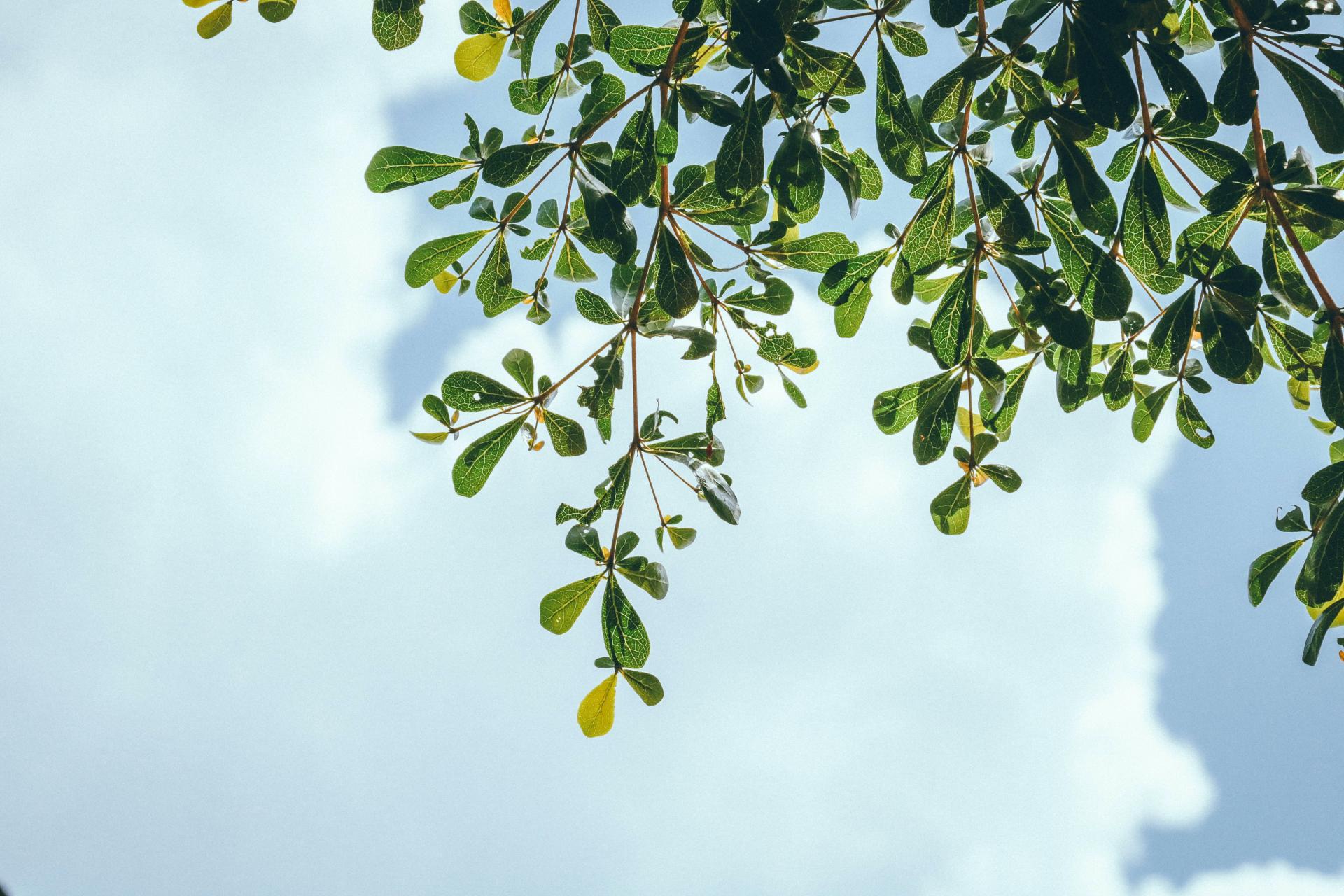
*Assessing the Damage*
1. Examine the leaves. You only need to treat plants that are currently infested with lace bugs. Lace bugs cause white spots to appear on the leaf. The larger your infestation, the paler your leaves will become. A few white dots may mean a small infestation while leaves that are almost completely white indicate a much larger problem.
-The underside of the leaf may be covered in dark excrement.
-Do this every two weeks, starting in early spring and ending in late summer.
2. Check the undersides of leaves to look for the bugs. There are three different stages of a lace bug’s life. If you can reduce their numbers in early spring while they are still nymphs, you may be able to prevent an infestation in summer.
-Eggs are small, black, and oval. Three generations of eggs can be laid in one year, beginning in spring and ending in fall. Fall eggs will hatch next spring.
-Nymphs are small. They may have black, spotted markings, and they have not developed wings yet. Nymphs can hatch as early as April and as late as September.
-Adults have large wings with a lacy pattern. They may start appearing in early summer.
3. Monitor for early leaf drop. Severe infestations may cause the plant's leaves to drop early. At this point, you should use heavier pesticides to eliminate the lace bugs. New leaves should grow back as long as the infestation is handled.

1. Rinse plants that have a minor infestation. If you only notice a few lace bugs per leaf, you might be able to use a hose to get rid of them. Make sure your hose has a strong stream of water, and spray down the plant to wash the bugs away.
2. Spray insecticides onto the bottom of leaves. Lace bugs and their larva often feed on the bottom of leaves, so you will need to spray the insecticide directly onto the undersides of the leaves. Start in late spring when the eggs first hatch, and reapply every ten to fourteen days.
-You can use an insecticidal soap, but make sure you spray the bugs directly with it. Pesticides, such as pyrethrin or neem oil, also work.
-Insecticides will kill nymphs and adults but not eggs.
3. Apply horticultural oil in the fall to kill eggs. The eggs appear as black spots along the veins of the leaf. These cannot be killed with insecticides, but they can be killed with horticultural oil. Spray it along the underside of each leaf in the fall.
4. Apply neonicotinoids to the soil if other methods haven't worked. Neonicotinoids include imidacloprid and dinotefuran. When added to the soil, the plant may absorb the substances, which can keep the plant bug free for a whole season. These typically come as a granule or as a concentration.
If you have a granule version, sprinkle it around the base of the plant. Water the plant afterwards.
If you have a concentration, follow the instructions on the label to mix it with water. Pour it evenly around the base, and water the plant afterwards.
Keep in mind that neonicotinoids may also kill off beneficial bugs.

*Assessing the Damage*
1. Examine the leaves. You only need to treat plants that are currently infested with lace bugs. Lace bugs cause white spots to appear on the leaf. The larger your infestation, the paler your leaves will become. A few white dots may mean a small infestation while leaves that are almost completely white indicate a much larger problem.
-The underside of the leaf may be covered in dark excrement.
-Do this every two weeks, starting in early spring and ending in late summer.
2. Check the undersides of leaves to look for the bugs. There are three different stages of a lace bug’s life. If you can reduce their numbers in early spring while they are still nymphs, you may be able to prevent an infestation in summer.
-Eggs are small, black, and oval. Three generations of eggs can be laid in one year, beginning in spring and ending in fall. Fall eggs will hatch next spring.
-Nymphs are small. They may have black, spotted markings, and they have not developed wings yet. Nymphs can hatch as early as April and as late as September.
-Adults have large wings with a lacy pattern. They may start appearing in early summer.
3. Monitor for early leaf drop. Severe infestations may cause the plant's leaves to drop early. At this point, you should use heavier pesticides to eliminate the lace bugs. New leaves should grow back as long as the infestation is handled.

0
0
文章
ritau
2020年06月16日

The pineapple (Ananas comosus) is a tropical plant with an edible fruit and the most economically significant plant in the family Bromeliaceae. The pineapple is indigenous to South America, where it has been cultivated for many centuries. The introduction of the pineapple cultivation to Europe in the 17th century made it a significant cultural icon of luxury. Since the 1820s, pineapple has been commercially grown in greenhouses and many tropical plantations. Further, it is the third most important tropical fruit in world production. In the 20th century, Hawaii was a dominant producer of pineapples, especially for the US; however, by 2016, Costa Rica, Brazil, and the Philippines accounted for nearly one-third of the world's production of pineapples.
Pineapples grow as a small shrub; the individual flowers of the unpollinated plant fuse to form a multiple fruit. The plant is normally propagated from the offset produced at the top of the fruit, or from side shoot, and typically mature within a year.
Raw pineapple pulp is 86% water, 13% carbohydrates, 0.5% protein, and contains negligible fat (table). In a 100-gram reference amount, raw pineapple supplies 50 calories, and is a rich source of manganese (44% Daily Value, DV) and vitamin C (58% DV), but otherwise contains no micronutrients in significant amounts.
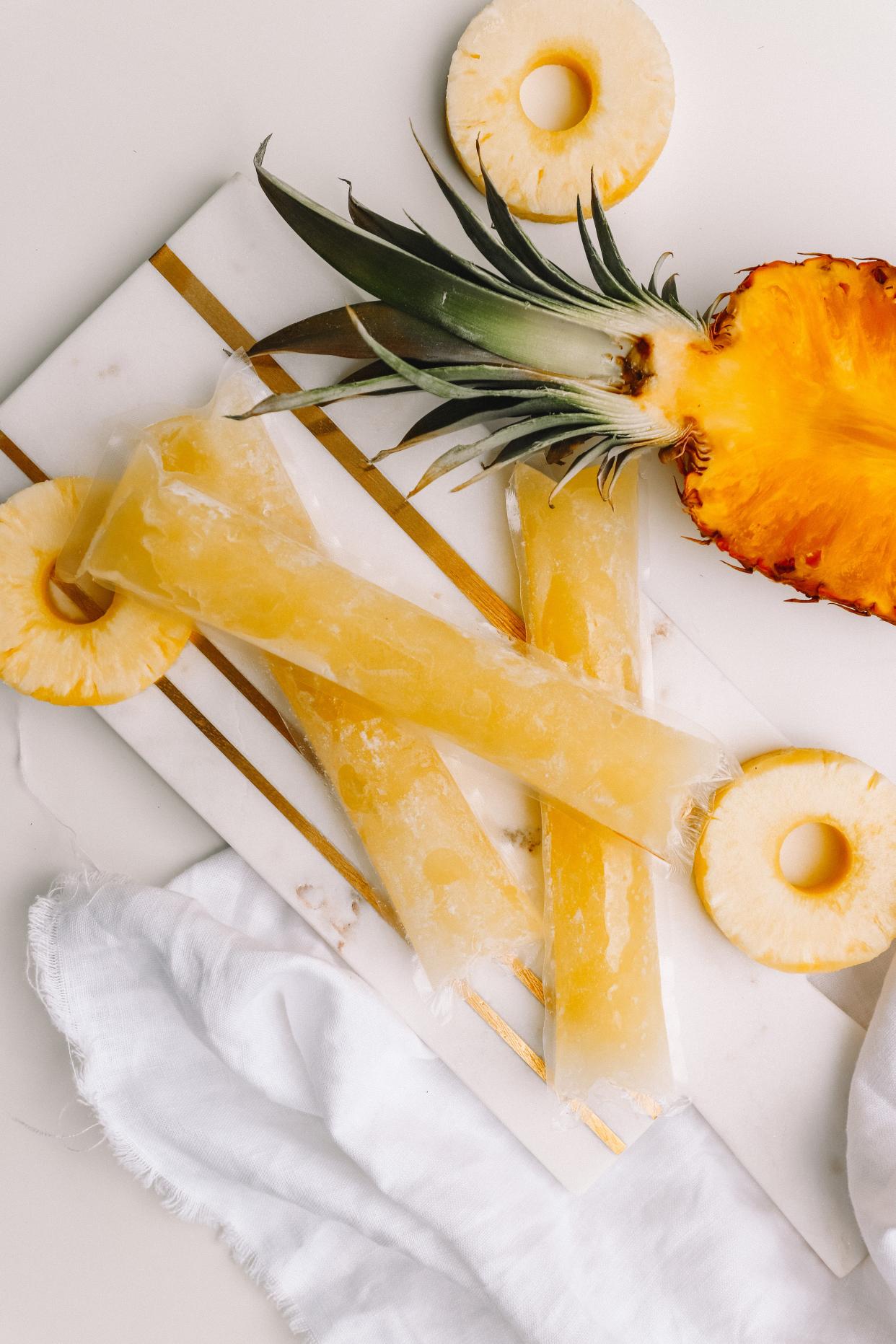
*How to grow
1. Pick out a fresh pineapple. Look for one with firm, green leaves that have not turned yellow or brown. The skin on the fruit should be golden brown and firm to the touch. Smell the pineapple to see if it's ripe: it should emit sweet, heady smell indicating that you've chosen it at just the right time to start a new pineapple plant.
-Make sure the pineapple isn't underripe. It needs to be ripe in order to produce another pineapple.
-Check to make sure the pineapple isn't too ripe by tugging a little at the leaves. If they come right off, the pineapple is too ripe to plant. Be gentle.
-Make sure the pineapple doesn't have scale insects around the base of the leaves. They look like small grayish black spots.
2. Twist the leaves off the top of the pineapple. Grasp the body of the pineapple with one hand and use the other to grab the leaves at the base and twist them off. This method ensures that the base of the leaves will stay intact. It will be attached to a minimum amount of fruit, which you don't need in order for the plant to grow.
-If you're having trouble twisting off the top, you can slice off the top of the pineapple. Slice off the excess fruit around the root.
-Make sure the base, the very tip of the area where the leaves join together, stays intact. New roots will be sprouting from this, and without it the plant won't grow.
3. Strip off some of the lower leaves to expose the stem. This helps the stem sprout roots once it is planted. Strip until a few inches of the stem are exposed. Cut away any remaining fruit without damaging the stem.
4. Turn it upside down and let it dry for a week. The scars where you made a cut and removed the leaves will harden, which is necessary before you take the next step.
-At this point, you can plant the crown into the soil, if you would like. While some people prefer to soak the pineapple crown first, it is not necessary.
5. Fill a large glass with water. The mouth of the glass should be large enough to fit the pineapple crown inside, but small enough so that you can prop it up to keep it from getting completely submerged.
6. Stick a few toothpicks into the pineapple crown. Place them across from each other near the top of the stem. Push them in just far enough so that they'll stay in place. These toothpicks are used to suspend the pineapple crown in the glass of water.
7. Put the crown in the water. The toothpicks should rest on the rim of the glass. The stem should be submerged in the water, and the leaves should stick out the top.

8. Place the glass in a sunny window and wait for the roots to sprout. It should take several days or up to a few weeks for white roots to poke out and begin to grow.
-Keep the plant away from extreme temperatures. Don't let it get too hot or too cold.
-Change out the water every few days to prevent the growth of mold.
9. Prepare a pot of soil for the crown. Fill a 6-inch pot with light garden soil that has a 30% blend of organic matter. This has the right blend of nutrients for the pineapple plant.
10. Plant the pineapple crown in the pot. Plant the crown when the roots are a few inches long. Wait until they've gotten long enough to take root in soil. If you plant the crown too early it won't do well. As you plant it, make sure that the base of any remaining leaves are just above soil level. Press the soil firmly around the base of the crown without getting any soil on the leaves.
11. Keep the plant moist and warm. It needs a sunny, warm and humid environment where the night temperatures won't drop below 65ºF (18ºC). If conditions are dry, mist the plant regularly.
-You can keep the pot outside if you live in a warm climate. If you have cool winters take it indoors during the winter season and keep it in a sunny window. It's important for the plant to get a lot of sun all year round.
-To help the rooting process, you can slip a plastic bag over the top of the pot. This will create a mini-greenhouse effect.
12. Give the plant food and water. Water the soil lightly once a week. Fertilize the plant with half-strength fertilizer twice a month during the summer.
13. Look for flowers. It can take several years, but eventually a red cone should appear from the center of the leaves, followed by blue flowers and eventually a fruit. It takes about six months for the fruit to fully develop. The pineapple will grow from the flower, above ground, in the center of the plant.
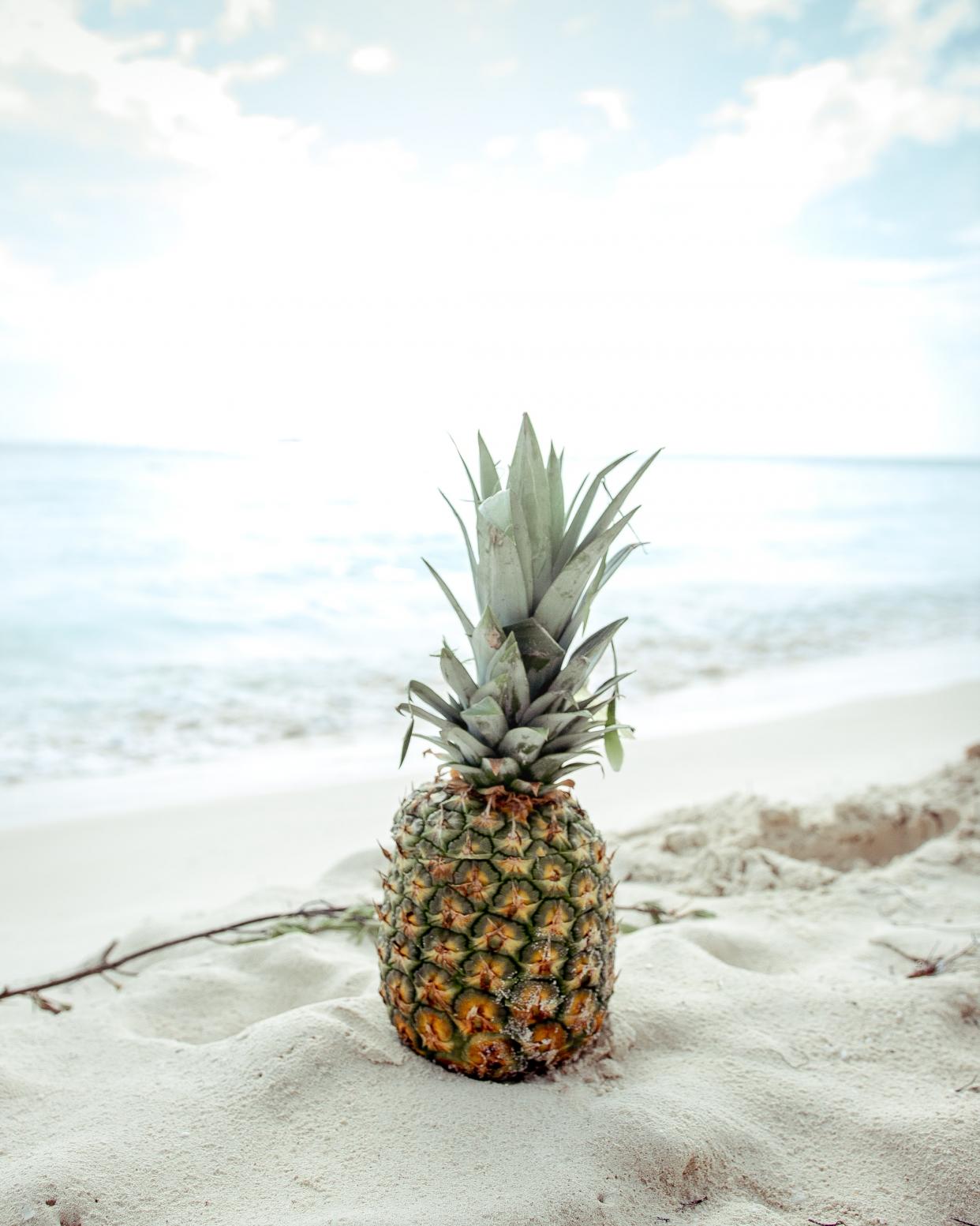
Pineapples grow as a small shrub; the individual flowers of the unpollinated plant fuse to form a multiple fruit. The plant is normally propagated from the offset produced at the top of the fruit, or from side shoot, and typically mature within a year.
Raw pineapple pulp is 86% water, 13% carbohydrates, 0.5% protein, and contains negligible fat (table). In a 100-gram reference amount, raw pineapple supplies 50 calories, and is a rich source of manganese (44% Daily Value, DV) and vitamin C (58% DV), but otherwise contains no micronutrients in significant amounts.

*How to grow
1. Pick out a fresh pineapple. Look for one with firm, green leaves that have not turned yellow or brown. The skin on the fruit should be golden brown and firm to the touch. Smell the pineapple to see if it's ripe: it should emit sweet, heady smell indicating that you've chosen it at just the right time to start a new pineapple plant.
-Make sure the pineapple isn't underripe. It needs to be ripe in order to produce another pineapple.
-Check to make sure the pineapple isn't too ripe by tugging a little at the leaves. If they come right off, the pineapple is too ripe to plant. Be gentle.
-Make sure the pineapple doesn't have scale insects around the base of the leaves. They look like small grayish black spots.
2. Twist the leaves off the top of the pineapple. Grasp the body of the pineapple with one hand and use the other to grab the leaves at the base and twist them off. This method ensures that the base of the leaves will stay intact. It will be attached to a minimum amount of fruit, which you don't need in order for the plant to grow.
-If you're having trouble twisting off the top, you can slice off the top of the pineapple. Slice off the excess fruit around the root.
-Make sure the base, the very tip of the area where the leaves join together, stays intact. New roots will be sprouting from this, and without it the plant won't grow.
3. Strip off some of the lower leaves to expose the stem. This helps the stem sprout roots once it is planted. Strip until a few inches of the stem are exposed. Cut away any remaining fruit without damaging the stem.
4. Turn it upside down and let it dry for a week. The scars where you made a cut and removed the leaves will harden, which is necessary before you take the next step.
-At this point, you can plant the crown into the soil, if you would like. While some people prefer to soak the pineapple crown first, it is not necessary.
5. Fill a large glass with water. The mouth of the glass should be large enough to fit the pineapple crown inside, but small enough so that you can prop it up to keep it from getting completely submerged.
6. Stick a few toothpicks into the pineapple crown. Place them across from each other near the top of the stem. Push them in just far enough so that they'll stay in place. These toothpicks are used to suspend the pineapple crown in the glass of water.
7. Put the crown in the water. The toothpicks should rest on the rim of the glass. The stem should be submerged in the water, and the leaves should stick out the top.

8. Place the glass in a sunny window and wait for the roots to sprout. It should take several days or up to a few weeks for white roots to poke out and begin to grow.
-Keep the plant away from extreme temperatures. Don't let it get too hot or too cold.
-Change out the water every few days to prevent the growth of mold.
9. Prepare a pot of soil for the crown. Fill a 6-inch pot with light garden soil that has a 30% blend of organic matter. This has the right blend of nutrients for the pineapple plant.
10. Plant the pineapple crown in the pot. Plant the crown when the roots are a few inches long. Wait until they've gotten long enough to take root in soil. If you plant the crown too early it won't do well. As you plant it, make sure that the base of any remaining leaves are just above soil level. Press the soil firmly around the base of the crown without getting any soil on the leaves.
11. Keep the plant moist and warm. It needs a sunny, warm and humid environment where the night temperatures won't drop below 65ºF (18ºC). If conditions are dry, mist the plant regularly.
-You can keep the pot outside if you live in a warm climate. If you have cool winters take it indoors during the winter season and keep it in a sunny window. It's important for the plant to get a lot of sun all year round.
-To help the rooting process, you can slip a plastic bag over the top of the pot. This will create a mini-greenhouse effect.
12. Give the plant food and water. Water the soil lightly once a week. Fertilize the plant with half-strength fertilizer twice a month during the summer.
13. Look for flowers. It can take several years, but eventually a red cone should appear from the center of the leaves, followed by blue flowers and eventually a fruit. It takes about six months for the fruit to fully develop. The pineapple will grow from the flower, above ground, in the center of the plant.

0
0
文章
ritau
2020年06月15日

Spider mites (Class Arachnida) are tiny sap-sucking plant pests. They attack the underside of leaves and suck the vigor from the plant; with large infestations they may even kill a plant. As soon as you spot an infestation, it's time to take charge and get rid of them! You can use biological control methods or chemical control methods to deal with a spider mite infestation.
1. Look at the surface of the leaves. If your plant is indeed infested with spider mites, the leaves may have yellow blotches on them. When light falls on the leaves, you may see a silvered look or even streaks of bronze or silver.
-While mites usually attack the underside of leaves, they can sometimes get greedy and also eat the upper side of leaves and flowers. Eventually, the mites will suck holes right through the leaves - providing the most obvious evidence of infestation.
-Even if you can't find holes in the leaves, your plant may still have spider mites, so keep an eye out for other signs of infestation.
-Other signs of mite damage include distortion, deformation, wilting, spotting, streaking or discoloration on the surface of the leave. If the mite damage gets particularly bad, the leaves may start to fall off.

2. Check for white webbing on the plant. This is a giveaway sign of some spider mites. The webbing usually clusters around feeding areas. Note that not all species of spider mite will produce webbing though.
3. Confirm the presence of spider mites. Spider mites are so small, they can be very difficult to see. However, one method you can use to confirm their presence is to take a sheet of white paper, place it beneath the plant you suspect to be infested and and lightly shake the stem of one of the leaves.
-A certain number of the spider mites should fall onto the paper. They can be viewed more easily with a magnifying glass.
-Spider mites come in a variety of colors, including red, green, yellow and brown. They have eight legs and tend to move quite slowly.
-Be on the lookout for spider mites with spots on their backs - these are known as two-spotted spider mites and can be particularly hard to get rid of.
4. Be particularly vigilant with certain species of plants. There are some plants which spider mites seem to favor more than others.
-In particular, pay attention to possible infestations on miniature roses, fruit trees, bananas, potted begonias, beans, mint, broad-leafed weeds, strawberries, frangipani and indoor houseplants.
-Be aware that the two-spotted spider mite has been known to infest over 100 different species of plant.
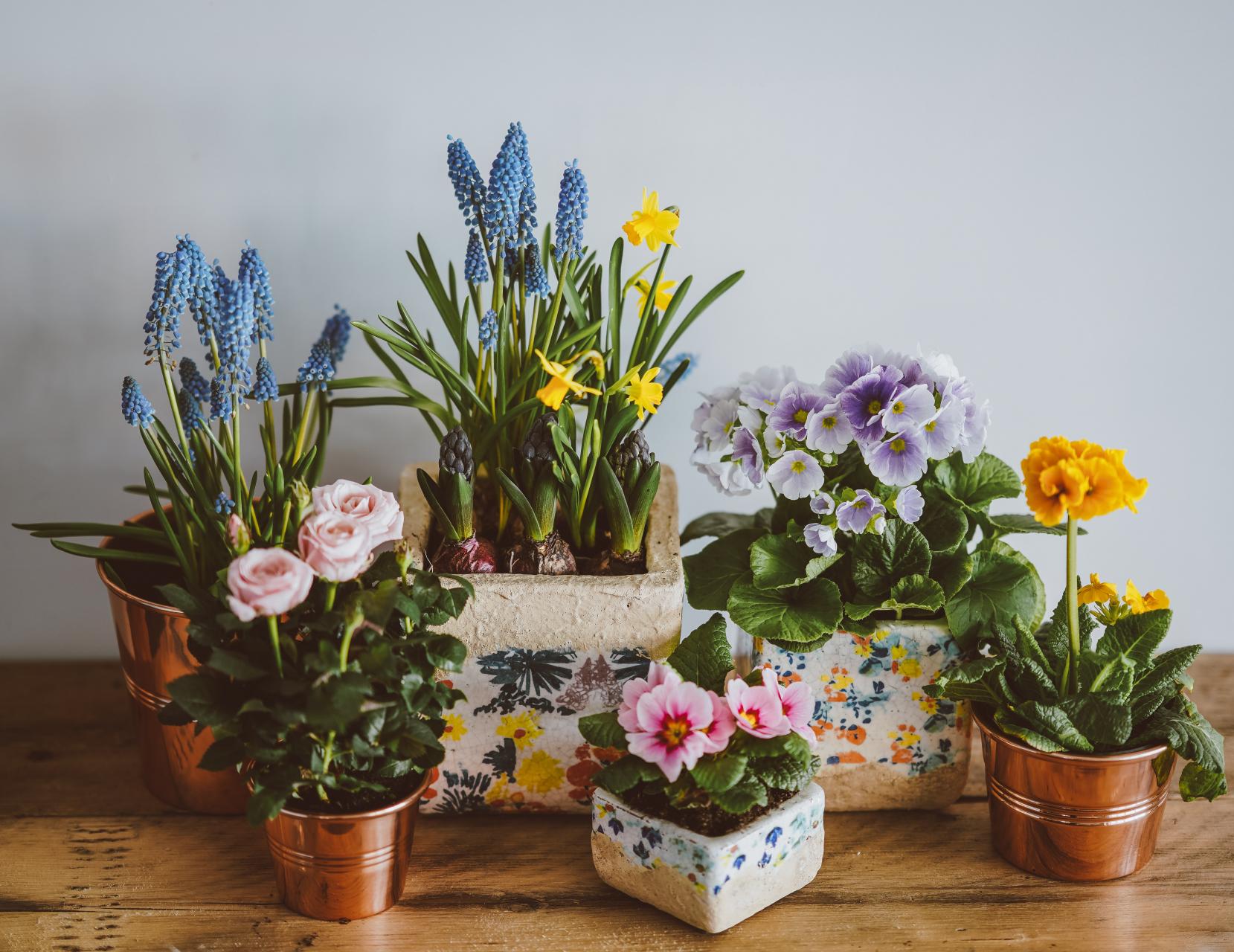
5. Be especially alert during dry and dusty weather conditions. These are the conditions where spider mites can cause the most damage, as they are thirsty and are seeking moisture from the leaves of the plant. This also means they are very attracted to anything grown under glass, including plants sitting inside on your windowsills.
1. Look at the surface of the leaves. If your plant is indeed infested with spider mites, the leaves may have yellow blotches on them. When light falls on the leaves, you may see a silvered look or even streaks of bronze or silver.
-While mites usually attack the underside of leaves, they can sometimes get greedy and also eat the upper side of leaves and flowers. Eventually, the mites will suck holes right through the leaves - providing the most obvious evidence of infestation.
-Even if you can't find holes in the leaves, your plant may still have spider mites, so keep an eye out for other signs of infestation.
-Other signs of mite damage include distortion, deformation, wilting, spotting, streaking or discoloration on the surface of the leave. If the mite damage gets particularly bad, the leaves may start to fall off.

2. Check for white webbing on the plant. This is a giveaway sign of some spider mites. The webbing usually clusters around feeding areas. Note that not all species of spider mite will produce webbing though.
3. Confirm the presence of spider mites. Spider mites are so small, they can be very difficult to see. However, one method you can use to confirm their presence is to take a sheet of white paper, place it beneath the plant you suspect to be infested and and lightly shake the stem of one of the leaves.
-A certain number of the spider mites should fall onto the paper. They can be viewed more easily with a magnifying glass.
-Spider mites come in a variety of colors, including red, green, yellow and brown. They have eight legs and tend to move quite slowly.
-Be on the lookout for spider mites with spots on their backs - these are known as two-spotted spider mites and can be particularly hard to get rid of.
4. Be particularly vigilant with certain species of plants. There are some plants which spider mites seem to favor more than others.
-In particular, pay attention to possible infestations on miniature roses, fruit trees, bananas, potted begonias, beans, mint, broad-leafed weeds, strawberries, frangipani and indoor houseplants.
-Be aware that the two-spotted spider mite has been known to infest over 100 different species of plant.

5. Be especially alert during dry and dusty weather conditions. These are the conditions where spider mites can cause the most damage, as they are thirsty and are seeking moisture from the leaves of the plant. This also means they are very attracted to anything grown under glass, including plants sitting inside on your windowsills.
0
0
文章
ritau
2020年06月11日

The avocado (Persea americana), a tree likely originating from south-central Mexico, is classified as a member of the flowering plant family Lauraceae. The fruit of the plant, also called an avocado (or avocado pear or alligator pear), is botanically a large berry containing a single large seed.
Avocados are commercially valuable and are cultivated in tropical and Mediterranean climates throughout the world. They have a green-skinned, fleshy body that may be pear-shaped, egg-shaped, or spherical. Commercially, they ripen after harvesting. Avocado trees are partially self-pollinating, and are often propagated through grafting to maintain predictable fruit quality and quantity. In 2017, Mexico produced 34% of the world supply of avocados.
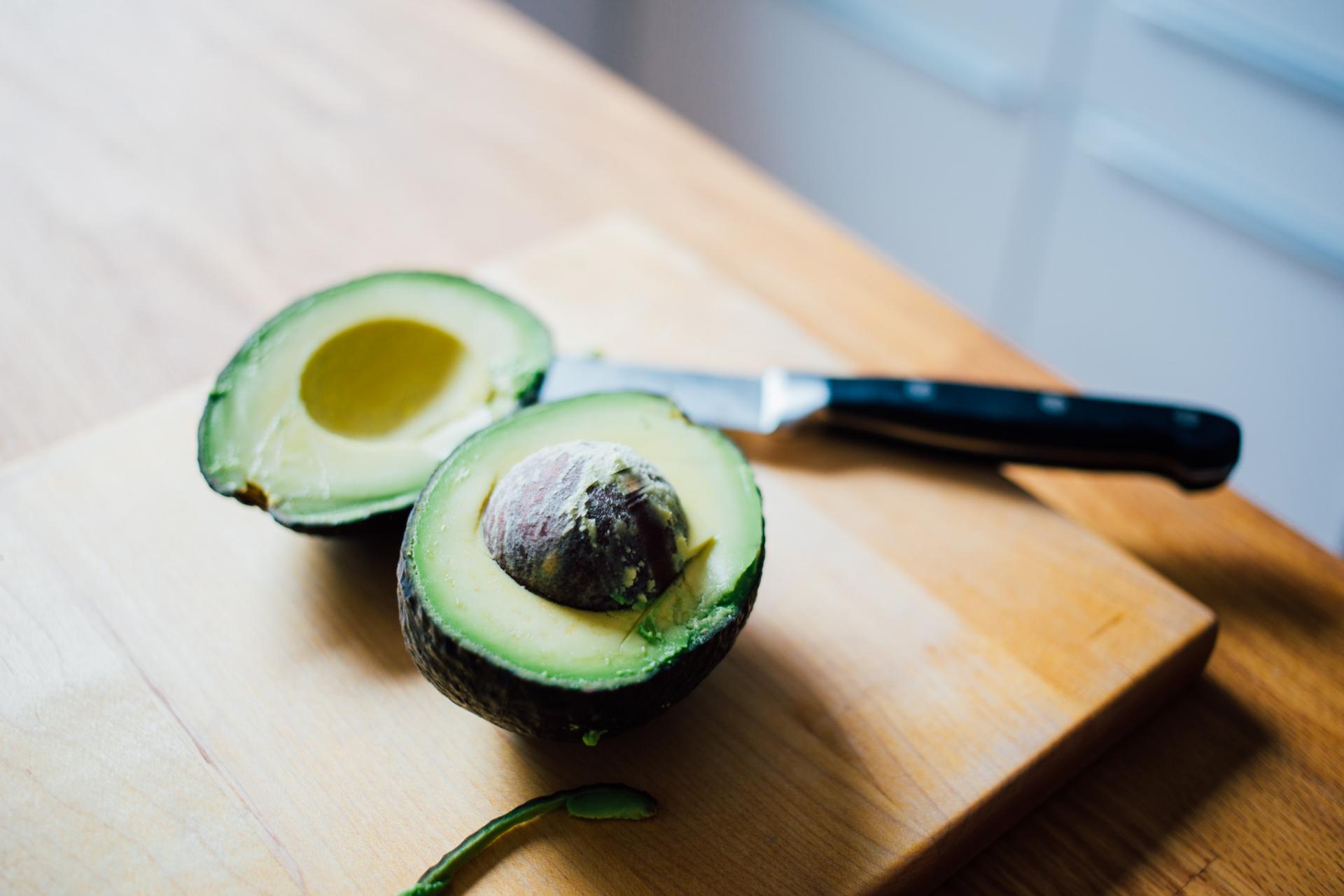
Persea americana, or the avocado, possibly originated in the Tehuacan Valley in the state of Puebla, Mexico, although fossil evidence suggests similar species were much more widespread millions of years ago. However, there is evidence for three possible separate domestications of the avocado, resulting in the currently recognized Mexican (aoacatl), Guatemalan (quilaoacatl), and West Indian (tlacacolaocatl) landraces. The Mexican and Guatemalan landraces originated in the highlands of those countries, while the West Indian landrace is a lowland variety that ranges from Guatemala, Costa Rica, Colombia, Ecuador to Peru, achieving a wide range through human agency before the arrival of the Europeans.The three separate landraces were most likely to have already intermingled in pre-Columbian America and were described in the Florentine Codex.
The earliest residents were living in temporary camps in an ancient wetland eating avocados, chilies, mollusks, sharks, birds, and sea lions. The oldest discovery of an avocado pit comes from Coxcatlan Cave, dating from around 9,000 to 10,000 years ago. Other caves in the Tehuacan Valley from around the same time period also show early evidence for the presence and consumption of avocado. There is evidence for avocado use at Norte Chico civilization sites in Peru by at least 3,200 years ago and at Caballo Muerto in Peru from around 3,800 to 4,500 years ago.
The native, undomesticated variety is known as a criollo, and is small, with dark black skin, and contains a large seed. It probably coevolved with extinct megafauna.The avocado tree also has a long history of cultivation in Central and South America, likely beginning as early as 5,000 BC. A water jar shaped like an avocado, dating to AD 900, was discovered in the pre-Incan city of Chan Chan.
The earliest known written account of the avocado in Europe is that of Martín Fernández de Enciso (circa 1470–1528) in 1519 in his book, Suma De Geographia Que Trata De Todas Las Partidas Y Provincias Del Mundo. The first detailed account that unequivocally describes the avocado was given by Gonzalo Fernández de Oviedo y Valdés in his work Sumario de la natural historia de las Indias in 1526.The first written record in English of the use of the word 'avocado' was by Hans Sloane, who coined the term, in a 1696 index of Jamaican plants. The plant was introduced to Spain in 1601, Indonesia around 1750, Mauritius in 1780, Brazil in 1809, the United States mainland in 1825, South Africa and Australia in the late 19th century, and Israel in 1908. In the United States, the avocado was introduced to Florida and Hawaii in 1833 and in California in 1856.
Before 1915, the avocado was commonly referred to in California as ahuacate and in Florida as alligator pear. In 1915, the California Avocado Association introduced the then-innovative term avocado to refer to the plant.

The word "avocado" comes from the Spanish aguacate, which in turn comes from the Nahuatl word āhuacatl [aːˈwakat͡ɬ], which goes back to the proto-Aztecan *pa:wa which also meant "avocado". Sometimes the Nahuatl word was used with the meaning "testicle", probably because of the likeness between the fruit and the body part.
The modern English name comes from an English rendering of the Spanish aguacate as avogato. The earliest known written use in English is attested from 1697 as "avogato pear", a term which was later corrupted as "alligator pear". Because the word avogato sounded like "advocate", several languages reinterpreted it to have that meaning. French uses avocat, which also means lawyer, and "advocate" — forms of the word appear in several Germanic languages, such as the (now obsolete) German Advogato-Birne, the old Danish advokat-pære (today it is called avocado) and the Dutch advocaatpeer.
In other Central American and Caribbean Spanish-speaking countries, it is known by the Mexican name, while South American Spanish-speaking countries use a Quechua-derived word, palta. In Portuguese, it is abacate. The fruit is sometimes called an avocado pear or alligator pear (due to its shape and the rough green skin of some cultivars). The Nahuatl āhuacatl can be compounded with other words, as in ahuacamolli, meaning avocado soup or sauce, from which the Spanish word guacamole derives.
In the United Kingdom, the term avocado pear is still sometimes misused as applied when avocados first became commonly available in the 1960s.
Originating as a diminutive in Australian English, a clipped form, avo, has since become a common colloquialism in South Africa and the United Kingdom.It is known as "butter fruit" in parts of India.
*Nutrients and fat composition*
A typical serving of avocado (100 g) is moderate to rich in several B vitamins and vitamin K, with good content of vitamin C, vitamin E and potassium (right table, USDA nutrient data). Avocados also contain phytosterols and carotenoids, such as lutein and zeaxanthin.
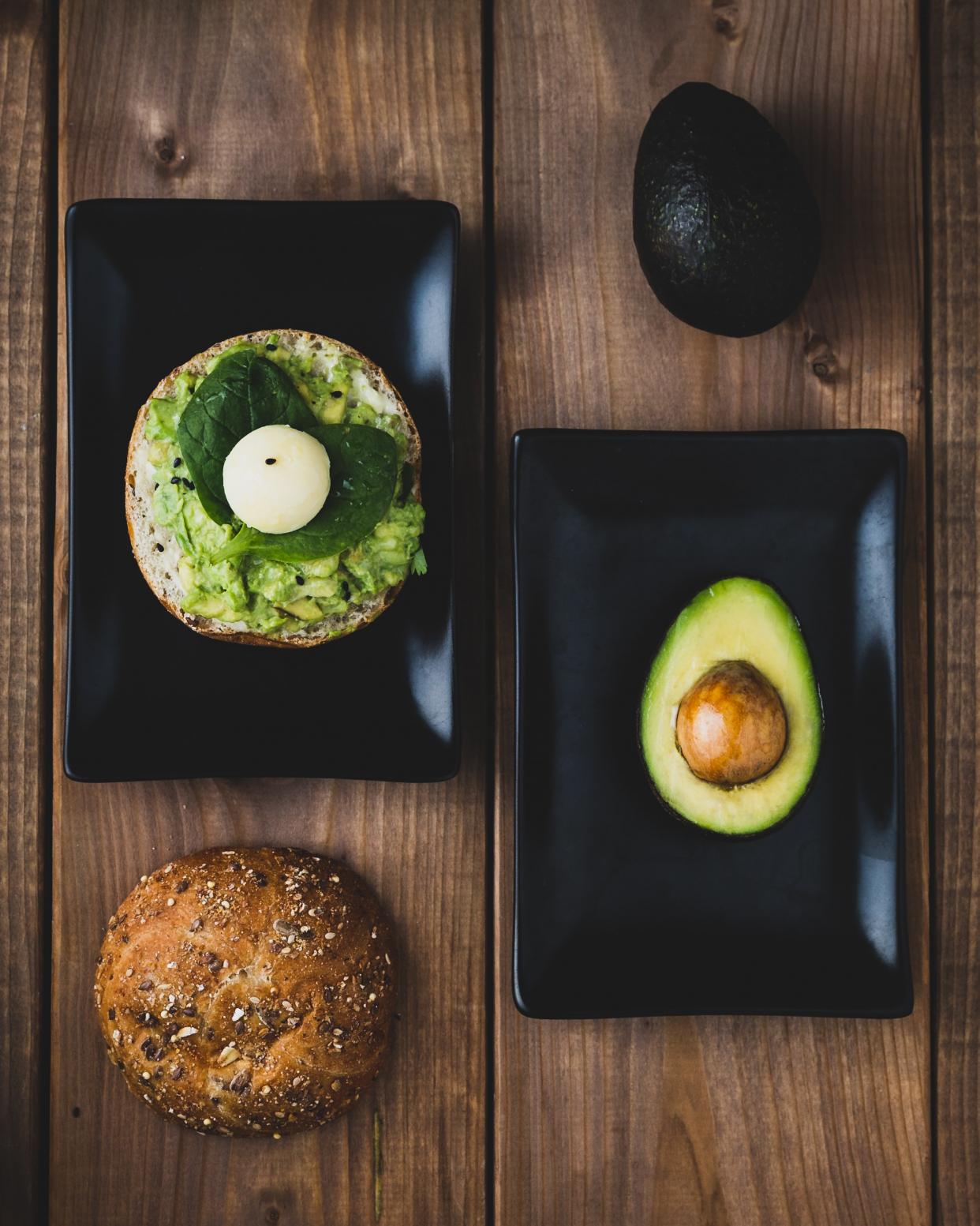
Avocados have diverse fats. For a typical avocado:
-About 75% of an avocado's energy comes from fat, most of which (67% of total fat) is monounsaturated fat as oleic acid.
-Other predominant fats include palmitic acid and linoleic acid.
-The saturated fat content amounts to 14% of the total fat.
-Typical total fat composition is roughly: 1% ω-3, 14% ω-6, 71% ω-9 (65% oleic and 6% palmitoleic), and 14% saturated fat (palmitic acid).
Although costly to produce, nutrient-rich avocado oil has diverse uses for salads or cooking and in cosmetics and soap products. Avocados are also a good source of vitamins B, E, and C, copper and fiber; their potassium content is higher than bananas.
Avocados are commercially valuable and are cultivated in tropical and Mediterranean climates throughout the world. They have a green-skinned, fleshy body that may be pear-shaped, egg-shaped, or spherical. Commercially, they ripen after harvesting. Avocado trees are partially self-pollinating, and are often propagated through grafting to maintain predictable fruit quality and quantity. In 2017, Mexico produced 34% of the world supply of avocados.

Persea americana, or the avocado, possibly originated in the Tehuacan Valley in the state of Puebla, Mexico, although fossil evidence suggests similar species were much more widespread millions of years ago. However, there is evidence for three possible separate domestications of the avocado, resulting in the currently recognized Mexican (aoacatl), Guatemalan (quilaoacatl), and West Indian (tlacacolaocatl) landraces. The Mexican and Guatemalan landraces originated in the highlands of those countries, while the West Indian landrace is a lowland variety that ranges from Guatemala, Costa Rica, Colombia, Ecuador to Peru, achieving a wide range through human agency before the arrival of the Europeans.The three separate landraces were most likely to have already intermingled in pre-Columbian America and were described in the Florentine Codex.
The earliest residents were living in temporary camps in an ancient wetland eating avocados, chilies, mollusks, sharks, birds, and sea lions. The oldest discovery of an avocado pit comes from Coxcatlan Cave, dating from around 9,000 to 10,000 years ago. Other caves in the Tehuacan Valley from around the same time period also show early evidence for the presence and consumption of avocado. There is evidence for avocado use at Norte Chico civilization sites in Peru by at least 3,200 years ago and at Caballo Muerto in Peru from around 3,800 to 4,500 years ago.
The native, undomesticated variety is known as a criollo, and is small, with dark black skin, and contains a large seed. It probably coevolved with extinct megafauna.The avocado tree also has a long history of cultivation in Central and South America, likely beginning as early as 5,000 BC. A water jar shaped like an avocado, dating to AD 900, was discovered in the pre-Incan city of Chan Chan.
The earliest known written account of the avocado in Europe is that of Martín Fernández de Enciso (circa 1470–1528) in 1519 in his book, Suma De Geographia Que Trata De Todas Las Partidas Y Provincias Del Mundo. The first detailed account that unequivocally describes the avocado was given by Gonzalo Fernández de Oviedo y Valdés in his work Sumario de la natural historia de las Indias in 1526.The first written record in English of the use of the word 'avocado' was by Hans Sloane, who coined the term, in a 1696 index of Jamaican plants. The plant was introduced to Spain in 1601, Indonesia around 1750, Mauritius in 1780, Brazil in 1809, the United States mainland in 1825, South Africa and Australia in the late 19th century, and Israel in 1908. In the United States, the avocado was introduced to Florida and Hawaii in 1833 and in California in 1856.
Before 1915, the avocado was commonly referred to in California as ahuacate and in Florida as alligator pear. In 1915, the California Avocado Association introduced the then-innovative term avocado to refer to the plant.

The word "avocado" comes from the Spanish aguacate, which in turn comes from the Nahuatl word āhuacatl [aːˈwakat͡ɬ], which goes back to the proto-Aztecan *pa:wa which also meant "avocado". Sometimes the Nahuatl word was used with the meaning "testicle", probably because of the likeness between the fruit and the body part.
The modern English name comes from an English rendering of the Spanish aguacate as avogato. The earliest known written use in English is attested from 1697 as "avogato pear", a term which was later corrupted as "alligator pear". Because the word avogato sounded like "advocate", several languages reinterpreted it to have that meaning. French uses avocat, which also means lawyer, and "advocate" — forms of the word appear in several Germanic languages, such as the (now obsolete) German Advogato-Birne, the old Danish advokat-pære (today it is called avocado) and the Dutch advocaatpeer.
In other Central American and Caribbean Spanish-speaking countries, it is known by the Mexican name, while South American Spanish-speaking countries use a Quechua-derived word, palta. In Portuguese, it is abacate. The fruit is sometimes called an avocado pear or alligator pear (due to its shape and the rough green skin of some cultivars). The Nahuatl āhuacatl can be compounded with other words, as in ahuacamolli, meaning avocado soup or sauce, from which the Spanish word guacamole derives.
In the United Kingdom, the term avocado pear is still sometimes misused as applied when avocados first became commonly available in the 1960s.
Originating as a diminutive in Australian English, a clipped form, avo, has since become a common colloquialism in South Africa and the United Kingdom.It is known as "butter fruit" in parts of India.
*Nutrients and fat composition*
A typical serving of avocado (100 g) is moderate to rich in several B vitamins and vitamin K, with good content of vitamin C, vitamin E and potassium (right table, USDA nutrient data). Avocados also contain phytosterols and carotenoids, such as lutein and zeaxanthin.

Avocados have diverse fats. For a typical avocado:
-About 75% of an avocado's energy comes from fat, most of which (67% of total fat) is monounsaturated fat as oleic acid.
-Other predominant fats include palmitic acid and linoleic acid.
-The saturated fat content amounts to 14% of the total fat.
-Typical total fat composition is roughly: 1% ω-3, 14% ω-6, 71% ω-9 (65% oleic and 6% palmitoleic), and 14% saturated fat (palmitic acid).
Although costly to produce, nutrient-rich avocado oil has diverse uses for salads or cooking and in cosmetics and soap products. Avocados are also a good source of vitamins B, E, and C, copper and fiber; their potassium content is higher than bananas.
0
0
文章
ritau
2020年06月07日

Mealybugs are insects in the family Pseudococcidae, unarmored scale insects found in moist, warm habitats. Many species are considered pests by some humans as they feed on plant juices of greenhouse plants, house plants and subtropical trees and also act as a vector for several plant diseases. Some Ants, however live in symbiotic relationships with them.
Methods
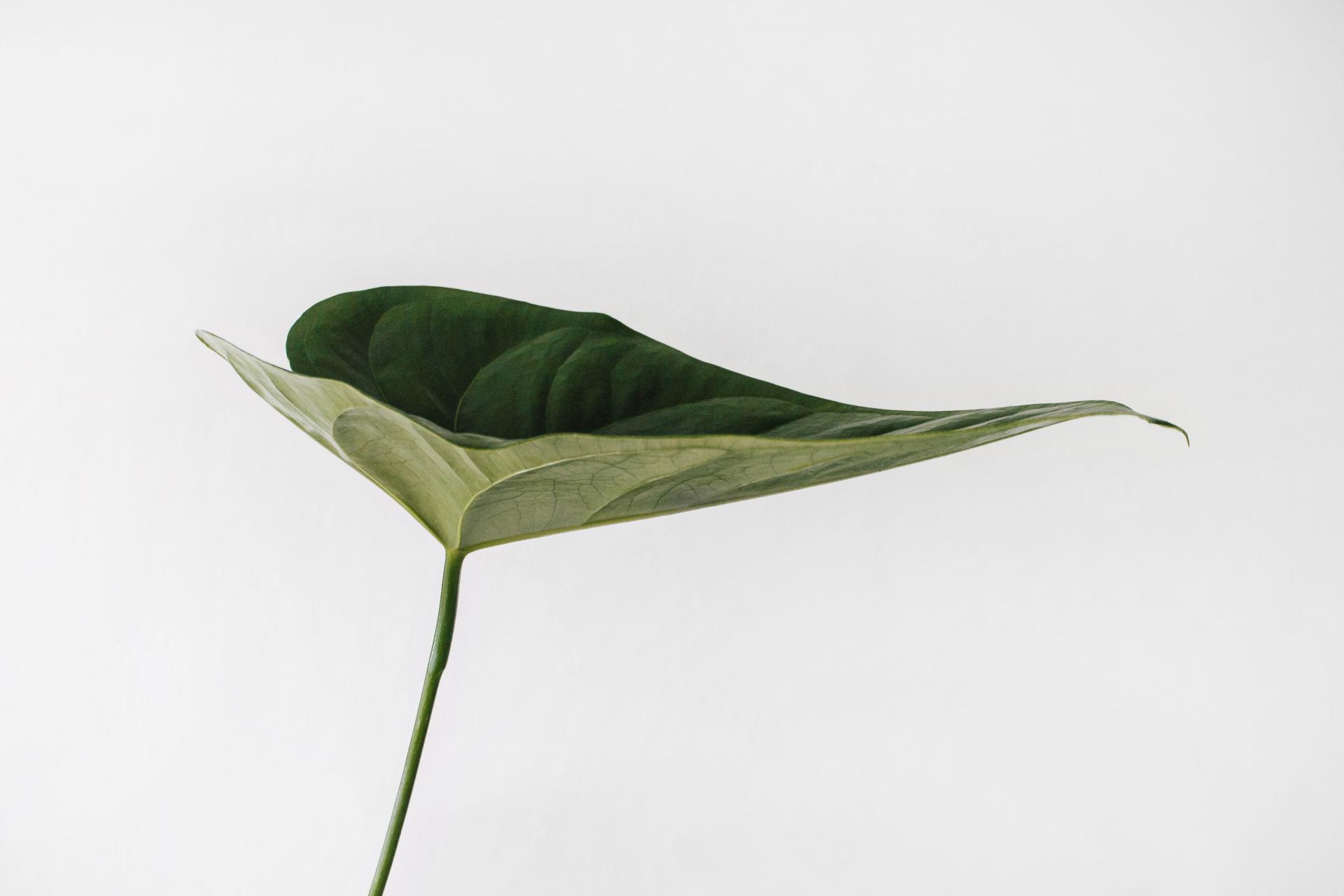
*Killing Small Infestations with Rubbing Alcohol
1. Dip a cotton swab in 70-percent isopropyl rubbing alcohol. Avoid using other kinds of alcohol or you could damage the plant you’re treating.
2. Rub the cotton swab over the surface of the infested plant. Make sure you get underneath the leaves and inside the crevices on the branches. Mealybugs tend to hide in hard-to-reach places, so it’s important you completely cover the plant you’re treating with the rubbing alcohol.
3. Use a spray bottle to apply rubbing alcohol to large plants. Fill the spray bottle with rubbing alcohol and spray it over the surface of large plants that are infested with mealybugs.
4. Remove any mealybugs you see on the plant. Mealybugs look like small, white bugs with a waxy coating. Pick the mealybugs off with your hand and dispose of them in the trash. Mealybugs don't bite, but you may want to wear gardening gloves so you don't get their waxy coating on your fingers.
5. Repeat weekly until the mealybugs are gone. Since mealybugs are good at hiding in hard to reach places, you'll likely need to do multiple applications of rubbing alcohol before they're all killed. Even if you don't see anymore mealybugs, it's a good idea to do a few more applications just in case there are some lingering bugs.You'll know the mealybugs are gone when you can't see anymore on the plant and the plant remains healthy and green.
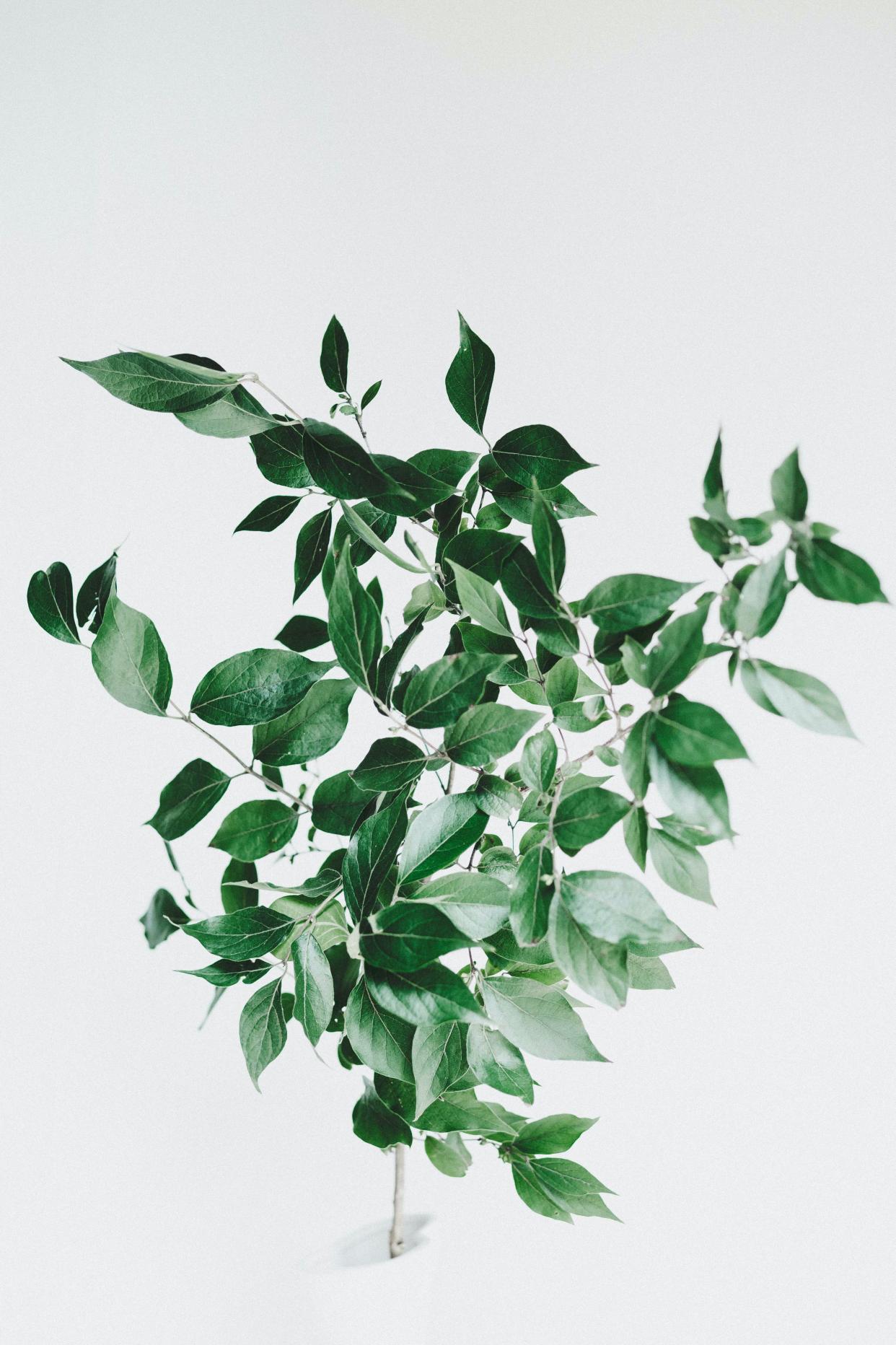
*Using Neem Oil for Potted or Shaded Plants
1. Mix together water, liquid dish soap, and neem oil in a spray bottle. Use 1 teaspoon (4.9 mL) of neem oil and 2-3 drops of dish soap. Neem oil is a vegetable oil that comes from neem trees that can be used to kill mealybugs.
2. Spray the plant you’re treating until it’s soaked. Make sure you spray underneath the leaves, at the base of the branches, and over the top of the soil the plant is in. You want the mealybugs to be completely smothered with the neem oil mixture.
3. Move the plant to a shaded area to dry. Don’t keep the plant in direct sunlight or extreme heat or it could burn. If you’re spraying outdoor plants that are rooted in the ground, wait for a shady day when it’s below 85 °F (29 °C) out.
4. Spray the plant weekly until the mealybugs are gone. One application of neem oil probably won’t kill all the mealybugs on the plant. Because mealybugs have a rapid lifecycle, you’ll need to routinely kill the newly-hatched bugs every week until all of the mealybugs have been killed off.
If the plant looks healthy and you don't see anymore mealybugs on it, they're most likely gone.
Methods

*Killing Small Infestations with Rubbing Alcohol
1. Dip a cotton swab in 70-percent isopropyl rubbing alcohol. Avoid using other kinds of alcohol or you could damage the plant you’re treating.
2. Rub the cotton swab over the surface of the infested plant. Make sure you get underneath the leaves and inside the crevices on the branches. Mealybugs tend to hide in hard-to-reach places, so it’s important you completely cover the plant you’re treating with the rubbing alcohol.
3. Use a spray bottle to apply rubbing alcohol to large plants. Fill the spray bottle with rubbing alcohol and spray it over the surface of large plants that are infested with mealybugs.
4. Remove any mealybugs you see on the plant. Mealybugs look like small, white bugs with a waxy coating. Pick the mealybugs off with your hand and dispose of them in the trash. Mealybugs don't bite, but you may want to wear gardening gloves so you don't get their waxy coating on your fingers.
5. Repeat weekly until the mealybugs are gone. Since mealybugs are good at hiding in hard to reach places, you'll likely need to do multiple applications of rubbing alcohol before they're all killed. Even if you don't see anymore mealybugs, it's a good idea to do a few more applications just in case there are some lingering bugs.You'll know the mealybugs are gone when you can't see anymore on the plant and the plant remains healthy and green.

*Using Neem Oil for Potted or Shaded Plants
1. Mix together water, liquid dish soap, and neem oil in a spray bottle. Use 1 teaspoon (4.9 mL) of neem oil and 2-3 drops of dish soap. Neem oil is a vegetable oil that comes from neem trees that can be used to kill mealybugs.
2. Spray the plant you’re treating until it’s soaked. Make sure you spray underneath the leaves, at the base of the branches, and over the top of the soil the plant is in. You want the mealybugs to be completely smothered with the neem oil mixture.
3. Move the plant to a shaded area to dry. Don’t keep the plant in direct sunlight or extreme heat or it could burn. If you’re spraying outdoor plants that are rooted in the ground, wait for a shady day when it’s below 85 °F (29 °C) out.
4. Spray the plant weekly until the mealybugs are gone. One application of neem oil probably won’t kill all the mealybugs on the plant. Because mealybugs have a rapid lifecycle, you’ll need to routinely kill the newly-hatched bugs every week until all of the mealybugs have been killed off.
If the plant looks healthy and you don't see anymore mealybugs on it, they're most likely gone.
0
0
文章
ritau
2020年05月21日

A rose is a woody perennial flowering plant of the genus Rosa, in the family Rosaceae, or the flower it bears. There are over three hundred species and thousands of cultivars. They form a group of plants that can be erect shrubs, climbing, or trailing, with stems that are often armed with sharp prickles. Flowers vary in size and shape and are usually large and showy, in colours ranging from white through yellows and reds. Most species are native to Asia, with smaller numbers native to Europe, North America, and northwestern Africa. Species, cultivars and hybrids are all widely grown for their beauty and often are fragrant. Roses have acquired cultural significance in many societies. Rose plants range in size from compact, miniature roses, to climbers that can reach seven meters in height. Different species hybridize easily, and this has been used in the development of the wide range of garden roses.

The long cultural history of the rose has led to it being used often as a symbol. In ancient Greece, the rose was closely associated with the goddess Aphrodite. In the Iliad, Aphrodite protects the body of Hector using the "immortal oil of the rose" and the archaic Greek lyric poet Ibycus praises a beautiful youth saying that Aphrodite nursed him "among rose blossoms". The second-century AD Greek travel writer Pausanias associates the rose with the story of Adonis and states that the rose is red because Aphrodite wounded herself on one of its thorns and stained the flower red with her blood. Book Eleven of the ancient Roman novel The Golden Ass by Apuleius contains a scene in which the goddess Isis, who is identified with Venus, instructs the main character, Lucius, who has been transformed into a donkey, to eat rose petals from a crown of roses worn by a priest as part of a religious procession in order to regain his humanity.
Following the Christianization of the Roman Empire, the rose became identified with the Virgin Mary. The color of the rose and the number of roses received has symbolic representation. The rose symbol eventually led to the creation of the rosary and other devotional prayers in Christianity.
Ever since the 1400s, the Franciscans have had a Crown Rosary of the Seven Joys of the Blessed Virgin Mary. In the 1400s and 1500s, the Carthusians promoted the idea of sacred mysteries associated with the rose symbol and rose gardens. Albrecht Dürer's painting The Feast of the Rosary (1506) depicts the Virgin Mary distributing garlands of roses to her worshippers.
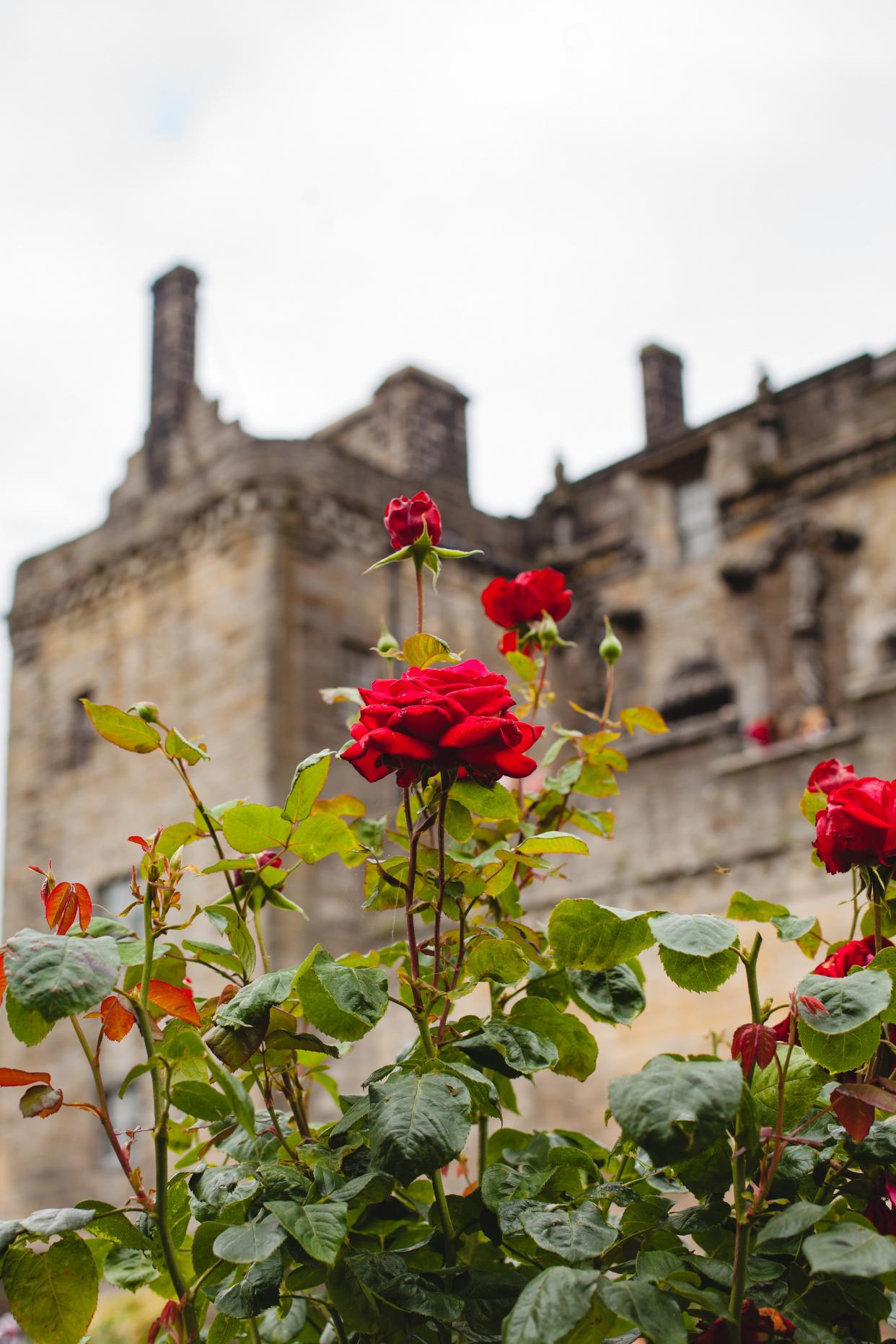
Roses symbolised the Houses of York and Lancaster in a conflict known as the Wars of the Roses.
Roses are a favored subject in art and appear in portraits, illustrations, on stamps, as ornaments or as architectural elements. The Luxembourg-born Belgian artist and botanist Pierre-Joseph Redouté is known for his detailed watercolours of flowers, particularly roses.
Henri Fantin-Latour was also a prolific painter of still life, particularly flowers including roses. The rose 'Fantin-Latour' was named after the artist.
Other impressionists including Claude Monet, Paul Cézanne and Pierre-Auguste Renoir have paintings of roses among their works.
In 1986 President Ronald Reagan signed legislation to make the rose the floral emblem of the United States.

The long cultural history of the rose has led to it being used often as a symbol. In ancient Greece, the rose was closely associated with the goddess Aphrodite. In the Iliad, Aphrodite protects the body of Hector using the "immortal oil of the rose" and the archaic Greek lyric poet Ibycus praises a beautiful youth saying that Aphrodite nursed him "among rose blossoms". The second-century AD Greek travel writer Pausanias associates the rose with the story of Adonis and states that the rose is red because Aphrodite wounded herself on one of its thorns and stained the flower red with her blood. Book Eleven of the ancient Roman novel The Golden Ass by Apuleius contains a scene in which the goddess Isis, who is identified with Venus, instructs the main character, Lucius, who has been transformed into a donkey, to eat rose petals from a crown of roses worn by a priest as part of a religious procession in order to regain his humanity.
Following the Christianization of the Roman Empire, the rose became identified with the Virgin Mary. The color of the rose and the number of roses received has symbolic representation. The rose symbol eventually led to the creation of the rosary and other devotional prayers in Christianity.
Ever since the 1400s, the Franciscans have had a Crown Rosary of the Seven Joys of the Blessed Virgin Mary. In the 1400s and 1500s, the Carthusians promoted the idea of sacred mysteries associated with the rose symbol and rose gardens. Albrecht Dürer's painting The Feast of the Rosary (1506) depicts the Virgin Mary distributing garlands of roses to her worshippers.

Roses symbolised the Houses of York and Lancaster in a conflict known as the Wars of the Roses.
Roses are a favored subject in art and appear in portraits, illustrations, on stamps, as ornaments or as architectural elements. The Luxembourg-born Belgian artist and botanist Pierre-Joseph Redouté is known for his detailed watercolours of flowers, particularly roses.
Henri Fantin-Latour was also a prolific painter of still life, particularly flowers including roses. The rose 'Fantin-Latour' was named after the artist.
Other impressionists including Claude Monet, Paul Cézanne and Pierre-Auguste Renoir have paintings of roses among their works.
In 1986 President Ronald Reagan signed legislation to make the rose the floral emblem of the United States.
0
0
文章
ritau
2020年05月17日

Asparagus, or garden asparagus, folk name sparrow grass, scientific name Asparagus officinalis, is a perennial flowering plant species in the genus Asparagus. Its young shoots are used as a spring vegetable.
It was once classified in the lily family, like the related Allium species, onions and garlic. However, genetic research places lilies, Allium, and asparagus in three separate families—the Liliaceae, Amaryllidaceae, and Asparagaceae, respectively—with the Amaryllidaceae and Asparagaceae being grouped together in the order Asparagales. Sources differ as to the native range of Asparagus officinalis, but generally include most of Europe and western temperate Asia. It is widely cultivated as a vegetable crop.
Only young asparagus shoots are commonly eaten: once the buds start to open ("ferning out"), the shoots quickly turn woody.
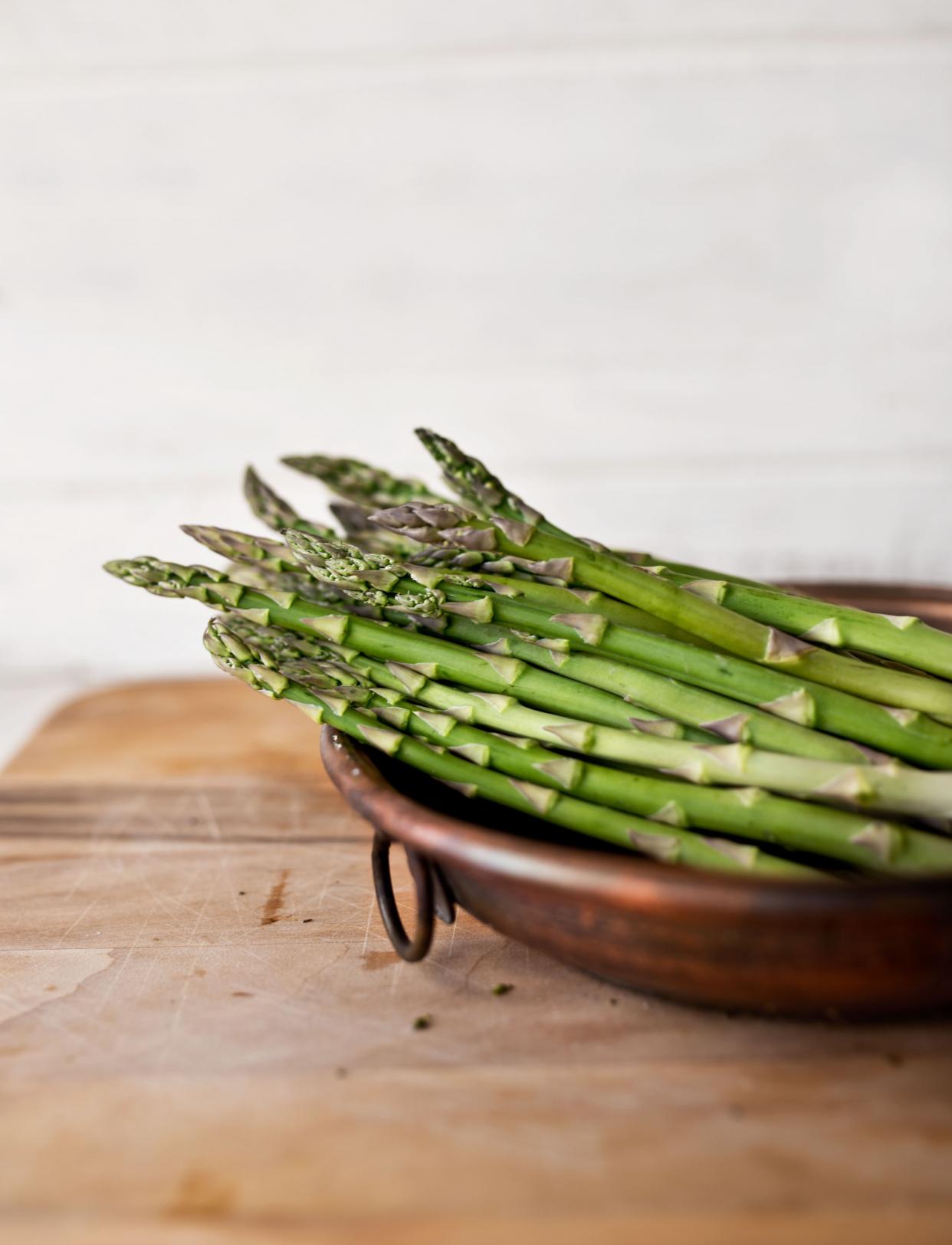
Water makes up 93% of asparagus's composition. Asparagus is low in calories and is very low in sodium. It is a good source of vitamin B6, calcium, magnesium, and zinc, and a very good source of dietary fibre, protein, beta-carotene, vitamin C, vitamin E, vitamin K, thiamin, riboflavin, rutin, niacin, folic acid, iron, phosphorus, potassium, copper, manganese, and selenium, as well as chromium, a trace mineral that regulates the ability of insulin to transport glucose from the bloodstream into cells. The amino acid asparagine gets its name from asparagus, as the asparagus plant is relatively rich in this compound.
The shoots are prepared and served in a number of ways around the world, typically as an appetizer or vegetable side dish. In Asian-style cooking, asparagus is often stir-fried. Cantonese restaurants in the United States often serve asparagus stir-fried with chicken, shrimp, or beef. It may also be quickly grilled over charcoal or hardwood embers, and is also used as an ingredient in some stews and soups. In recent years, asparagus eaten raw, as a component of a salad, has regained popularity.
Asparagus can also be pickled and stored for several years. Some brands label shoots prepared in this way as "marinated".
Stem thickness indicates the age of the plant (and not the age of the stalk), with the thicker stems coming from older plants. Older, thicker stalks can be woody, although peeling the skin at the base removes the tough layer. Peeled asparagus will poach much faster. The bottom portion of asparagus often contains sand and soil, so thorough cleaning is generally advised before cooking. Plants bearing seeds produce spears that are smaller and thinner, and plants without seeds produce larger and thicker spears. Thickness and thinness are not an indication of tenderness or toughness. The stalks are thick or thin from the moment they sprout from the ground.

Green asparagus is eaten worldwide, though the availability of imports throughout the year has made it less of a delicacy than it once was. In Europe, however, the "asparagus season is a highlight of the foodie calendar"; in the UK this traditionally begins on 23 April and ends on Midsummer Day.As in continental Europe, due to the short growing season and demand for local produce, asparagus commands a premium price.
It was once classified in the lily family, like the related Allium species, onions and garlic. However, genetic research places lilies, Allium, and asparagus in three separate families—the Liliaceae, Amaryllidaceae, and Asparagaceae, respectively—with the Amaryllidaceae and Asparagaceae being grouped together in the order Asparagales. Sources differ as to the native range of Asparagus officinalis, but generally include most of Europe and western temperate Asia. It is widely cultivated as a vegetable crop.
Only young asparagus shoots are commonly eaten: once the buds start to open ("ferning out"), the shoots quickly turn woody.

Water makes up 93% of asparagus's composition. Asparagus is low in calories and is very low in sodium. It is a good source of vitamin B6, calcium, magnesium, and zinc, and a very good source of dietary fibre, protein, beta-carotene, vitamin C, vitamin E, vitamin K, thiamin, riboflavin, rutin, niacin, folic acid, iron, phosphorus, potassium, copper, manganese, and selenium, as well as chromium, a trace mineral that regulates the ability of insulin to transport glucose from the bloodstream into cells. The amino acid asparagine gets its name from asparagus, as the asparagus plant is relatively rich in this compound.
The shoots are prepared and served in a number of ways around the world, typically as an appetizer or vegetable side dish. In Asian-style cooking, asparagus is often stir-fried. Cantonese restaurants in the United States often serve asparagus stir-fried with chicken, shrimp, or beef. It may also be quickly grilled over charcoal or hardwood embers, and is also used as an ingredient in some stews and soups. In recent years, asparagus eaten raw, as a component of a salad, has regained popularity.
Asparagus can also be pickled and stored for several years. Some brands label shoots prepared in this way as "marinated".
Stem thickness indicates the age of the plant (and not the age of the stalk), with the thicker stems coming from older plants. Older, thicker stalks can be woody, although peeling the skin at the base removes the tough layer. Peeled asparagus will poach much faster. The bottom portion of asparagus often contains sand and soil, so thorough cleaning is generally advised before cooking. Plants bearing seeds produce spears that are smaller and thinner, and plants without seeds produce larger and thicker spears. Thickness and thinness are not an indication of tenderness or toughness. The stalks are thick or thin from the moment they sprout from the ground.

Green asparagus is eaten worldwide, though the availability of imports throughout the year has made it less of a delicacy than it once was. In Europe, however, the "asparagus season is a highlight of the foodie calendar"; in the UK this traditionally begins on 23 April and ends on Midsummer Day.As in continental Europe, due to the short growing season and demand for local produce, asparagus commands a premium price.
0
0
文章
ritau
2020年05月12日

Spinach (Spinacia oleracea) is a leafy green flowering plant native to central and western Asia. It is of the order Caryophyllales, family Amaranthaceae, subfamily Chenopodioideae. Its leaves are a common edible vegetable consumed either fresh, or after storage using preservation techniques by canning, freezing, or dehydration. It may be eaten cooked or raw, and the taste differs considerably; the high oxalate content may be reduced by steaming.
It is an annual plant (rarely biennial), growing as tall as 30 cm (1 ft). Spinach may overwinter in temperate regions. The leaves are alternate, simple, ovate to triangular, and very variable in size: 2–30 cm (1–12 in) long and 1–15 cm (0.4–5.9 in) broad, with larger leaves at the base of the plant and small leaves higher on the flowering stem. The flowers are inconspicuous, yellow-green, 3–4 mm (0.1–0.2 in) in diameter, and mature into a small, hard, dry, lumpy fruit cluster 5–10 mm (0.2–0.4 in) across containing several seeds.
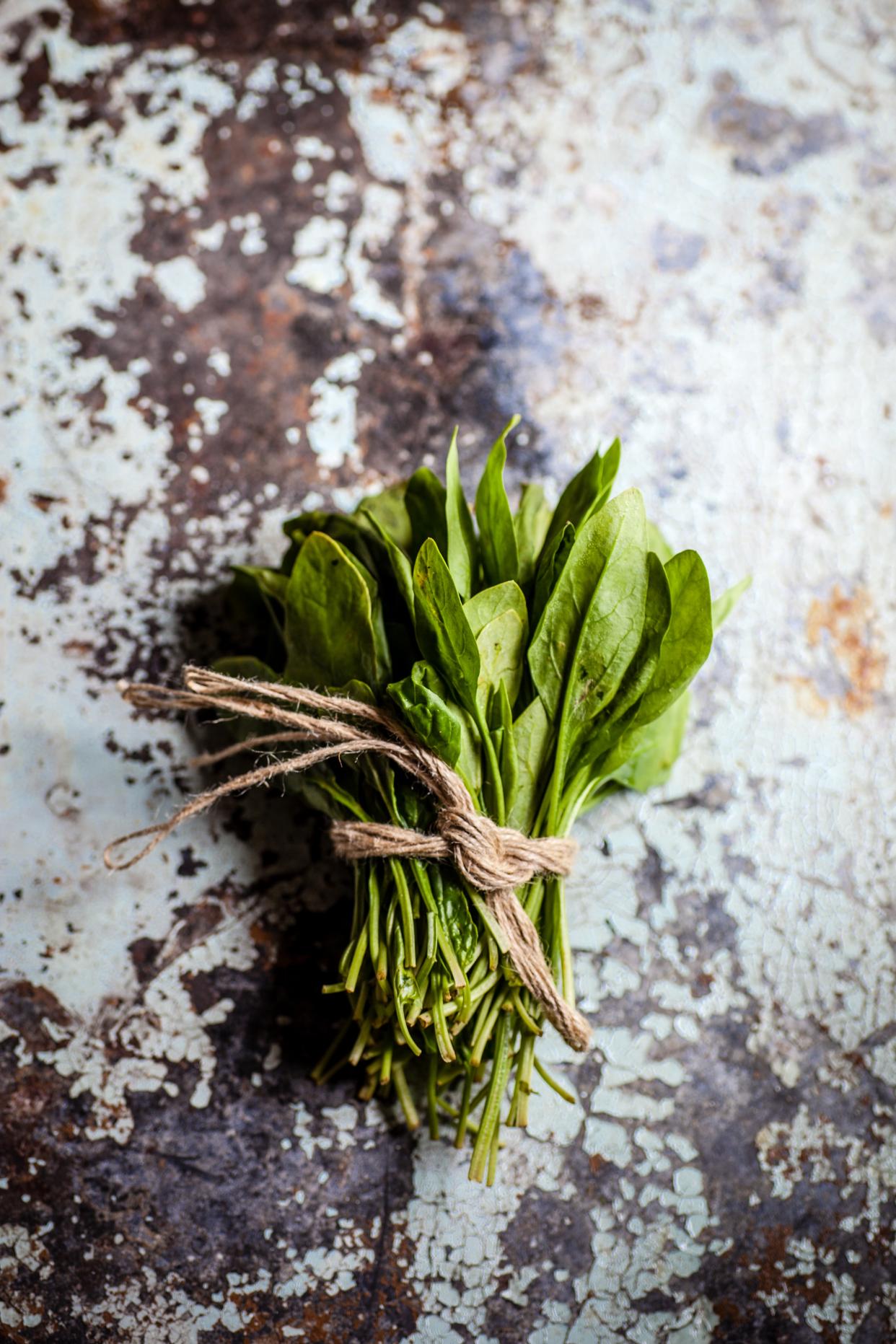
*Nutrients*
Raw spinach is 91% water, 4% carbohydrates, 3% protein, and contains negligible fat. In a 100 g (3.5 oz) serving providing only 23 calories, spinach has a high nutritional value, especially when fresh, frozen, steamed, or quickly boiled. It is a rich source (20% or more of the Daily Value, DV) of vitamin A, vitamin C, vitamin K, magnesium, manganese, iron and folate. Spinach is a good source (10-19% of DV) of the B vitamins riboflavin and vitamin B6, vitamin E, calcium, potassium, and dietary fiber. Although spinach is touted as being high in iron and calcium content, and is often served and consumed in its raw form, raw spinach contains high levels of oxalates, which block absorption of calcium and iron in the stomach and small intestine. Spinach cooked in several changes of water has much lower levels of oxalates and is better digested and its nutrients absorbed more completely.
-Iron
Spinach, along with other green, leafy vegetables, contains an appreciable amount of iron attaining 21% of the Daily Value in a 100 g (3.5 oz) amount of raw spinach. For example, the United States Department of Agriculture states that a 100 g (3.5 oz) serving of cooked spinach contains 3.57 mg of iron, whereas a 100 g (3.5 oz) ground hamburger patty contains 1.93 mg of iron. However, spinach contains iron absorption-inhibiting substances, including high levels of oxalate, which can bind to the iron to form ferrous oxalate and render much of the iron in spinach unusable by the body.In addition to preventing absorption and use, high levels of oxalates remove iron from the body.
-Calcium
Spinach also has a moderate calcium content which can be affected by oxalates, decreasing its absorption. The calcium in spinach is among the least bioavailable of food calcium sources. By way of comparison, the human body can absorb about half of the calcium present in broccoli, yet only around 5% of the calcium in spinach.

-Vitamin K
A quantity of 3.5 ounces of spinach contains over four times the recommended daily intake of vitamin K. For this reason, individuals taking the anticoagulant warfarin – which acts by inhibiting vitamin K – are instructed to minimize consumption of spinach (as well as other dark green leafy vegetables) to avoid blunting the effect of warfarin.
It is an annual plant (rarely biennial), growing as tall as 30 cm (1 ft). Spinach may overwinter in temperate regions. The leaves are alternate, simple, ovate to triangular, and very variable in size: 2–30 cm (1–12 in) long and 1–15 cm (0.4–5.9 in) broad, with larger leaves at the base of the plant and small leaves higher on the flowering stem. The flowers are inconspicuous, yellow-green, 3–4 mm (0.1–0.2 in) in diameter, and mature into a small, hard, dry, lumpy fruit cluster 5–10 mm (0.2–0.4 in) across containing several seeds.

*Nutrients*
Raw spinach is 91% water, 4% carbohydrates, 3% protein, and contains negligible fat. In a 100 g (3.5 oz) serving providing only 23 calories, spinach has a high nutritional value, especially when fresh, frozen, steamed, or quickly boiled. It is a rich source (20% or more of the Daily Value, DV) of vitamin A, vitamin C, vitamin K, magnesium, manganese, iron and folate. Spinach is a good source (10-19% of DV) of the B vitamins riboflavin and vitamin B6, vitamin E, calcium, potassium, and dietary fiber. Although spinach is touted as being high in iron and calcium content, and is often served and consumed in its raw form, raw spinach contains high levels of oxalates, which block absorption of calcium and iron in the stomach and small intestine. Spinach cooked in several changes of water has much lower levels of oxalates and is better digested and its nutrients absorbed more completely.
-Iron
Spinach, along with other green, leafy vegetables, contains an appreciable amount of iron attaining 21% of the Daily Value in a 100 g (3.5 oz) amount of raw spinach. For example, the United States Department of Agriculture states that a 100 g (3.5 oz) serving of cooked spinach contains 3.57 mg of iron, whereas a 100 g (3.5 oz) ground hamburger patty contains 1.93 mg of iron. However, spinach contains iron absorption-inhibiting substances, including high levels of oxalate, which can bind to the iron to form ferrous oxalate and render much of the iron in spinach unusable by the body.In addition to preventing absorption and use, high levels of oxalates remove iron from the body.
-Calcium
Spinach also has a moderate calcium content which can be affected by oxalates, decreasing its absorption. The calcium in spinach is among the least bioavailable of food calcium sources. By way of comparison, the human body can absorb about half of the calcium present in broccoli, yet only around 5% of the calcium in spinach.

-Vitamin K
A quantity of 3.5 ounces of spinach contains over four times the recommended daily intake of vitamin K. For this reason, individuals taking the anticoagulant warfarin – which acts by inhibiting vitamin K – are instructed to minimize consumption of spinach (as well as other dark green leafy vegetables) to avoid blunting the effect of warfarin.
0
0
文章
ritau
2020年05月06日

Broccoli is an edible green plant in the cabbage family (family Brassicaceae, genus Brassica) whose large flowering head and stalk is eaten as a vegetable. The word broccoli comes from the Italian plural of broccolo, which means "the flowering crest of a cabbage", and is the diminutive form of brocco, meaning "small nail" or "sprout".
Broccoli is classified in the Italica cultivar group of the species Brassica oleracea. Broccoli has large flower heads, usually dark green in color, arranged in a tree-like structure branching out from a thick stalk which is usually light green. The mass of flower heads is surrounded by leaves. Broccoli resembles cauliflower, which is a different cultivar group of the same Brassica species. Combined in 2017, China and India produced 73% of the world's broccoli and cauliflower crops.
Broccoli resulted from breeding of cultivated Brassica crops in the northern Mediterranean starting in about the sixth century BC. Broccoli has its origins in primitive cultivars grown in the Roman Empire.It is eaten raw or cooked. Broccoli is a particularly rich source of vitamin C and vitamin K. Contents of its characteristic sulfur-containing glucosinolate compounds, isothiocyanates and sulforaphane, are diminished by boiling, but are better preserved by steaming, microwaving or stir-frying.
A 100 gram reference serving of raw broccoli provides 34 calories and is a rich source (20% or higher of the Daily Value, DV) of vitamin C (107% DV) and vitamin K (97% DV) (table). Raw broccoli also contains moderate amounts (10–19% DV) of several B vitamins and the dietary mineral manganese, whereas other micronutrients are low in content (less than 10% DV). Raw broccoli is 89% water, 7% carbohydrates, 3% protein, and contains negligible fat (table).

Boiling substantially reduces the levels of broccoli glucosinolates, while other cooking methods, such as steaming, microwaving, and stir frying, have no significant effect on glucosinolate levels.
Broccoli is classified in the Italica cultivar group of the species Brassica oleracea. Broccoli has large flower heads, usually dark green in color, arranged in a tree-like structure branching out from a thick stalk which is usually light green. The mass of flower heads is surrounded by leaves. Broccoli resembles cauliflower, which is a different cultivar group of the same Brassica species. Combined in 2017, China and India produced 73% of the world's broccoli and cauliflower crops.
Broccoli resulted from breeding of cultivated Brassica crops in the northern Mediterranean starting in about the sixth century BC. Broccoli has its origins in primitive cultivars grown in the Roman Empire.It is eaten raw or cooked. Broccoli is a particularly rich source of vitamin C and vitamin K. Contents of its characteristic sulfur-containing glucosinolate compounds, isothiocyanates and sulforaphane, are diminished by boiling, but are better preserved by steaming, microwaving or stir-frying.
A 100 gram reference serving of raw broccoli provides 34 calories and is a rich source (20% or higher of the Daily Value, DV) of vitamin C (107% DV) and vitamin K (97% DV) (table). Raw broccoli also contains moderate amounts (10–19% DV) of several B vitamins and the dietary mineral manganese, whereas other micronutrients are low in content (less than 10% DV). Raw broccoli is 89% water, 7% carbohydrates, 3% protein, and contains negligible fat (table).

Boiling substantially reduces the levels of broccoli glucosinolates, while other cooking methods, such as steaming, microwaving, and stir frying, have no significant effect on glucosinolate levels.
0
0
文章
ritau
2020年05月02日

Celery (Apium graveolens) is a marshland plant in the family Apiaceae that has been cultivated as a vegetable since antiquity. Celery has a long fibrous stalk tapering into leaves. Depending on location and cultivar, either its stalks, leaves or hypocotyl are eaten and used in cooking. Celery seed is also used as a spice and its extracts have been used in herbal medicine.
Celery leaves are pinnate to bipinnate with rhombic leaflets 3–6 cm (1.2–2.4 in) long and 2–4 cm (0.79–1.57 in) broad. The flowers are creamy-white, 2–3 mm (0.079–0.118 in) in diameter, and are produced in dense compound umbels. The seeds are broad ovoid to globose, 1.5–2 mm (0.059–0.079 in) long and wide. Modern cultivars have been selected for solid petioles, leaf stalks. A celery stalk readily separates into "strings" which are bundles of angular collenchyma cells exterior to the vascular bundles.
Wild celery, Apium graveolens var. graveolens, grows to 1 m (3.3 ft) tall. It occurs around the globe. The first cultivation is thought to have happened in the Mediterranean region, where the natural habitats were salty and wet, or marshy soils near the coast where celery grew in agropyro-rumicion-plant communities.
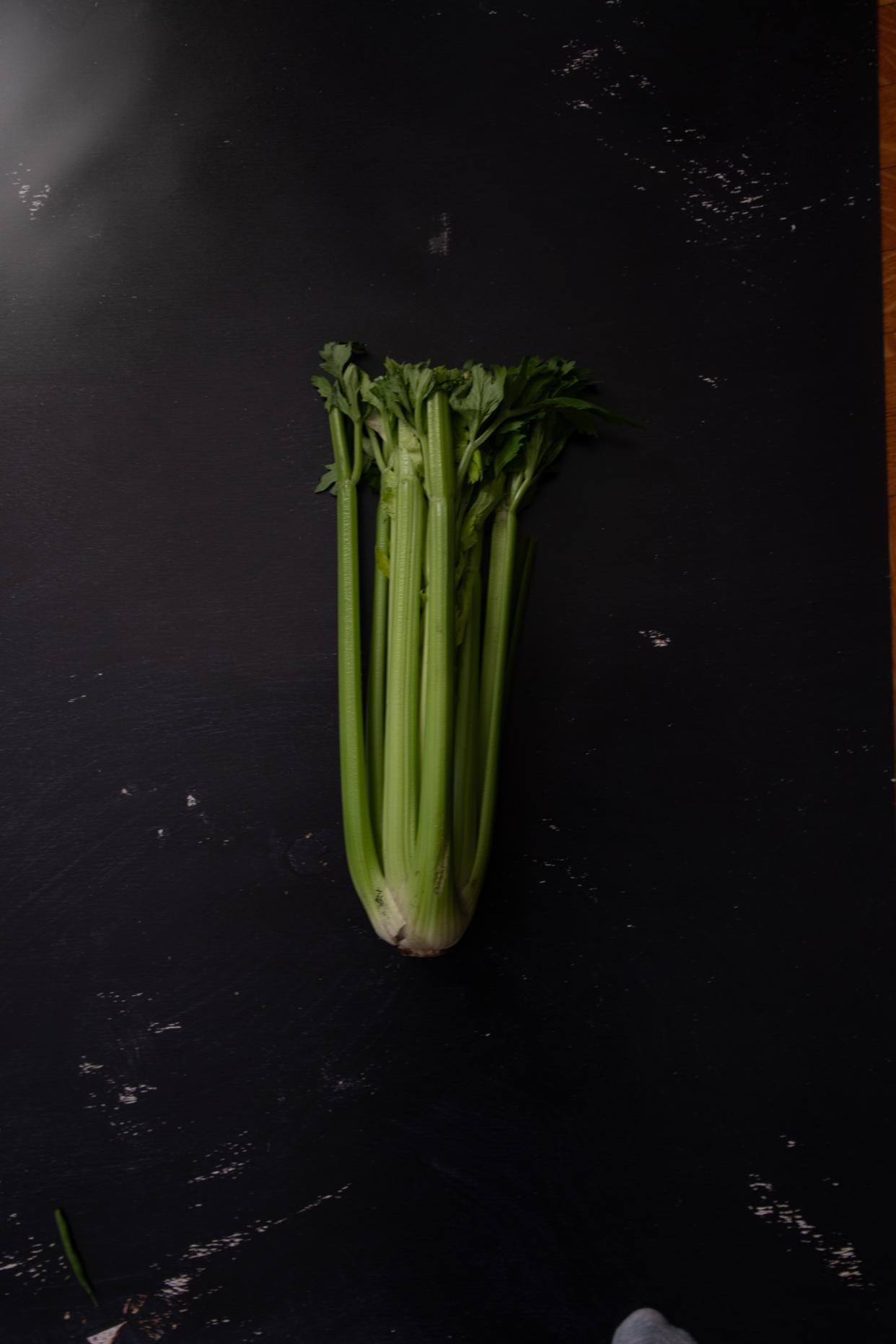
North of the Alps, wild celery is found only in the foothill zone on soils with some salt content. It prefers moist or wet, nutrient rich, muddy soils. It cannot be found in Austria and is increasingly rare in Germany.
The plants are raised from seed, sown either in a hot bed or in the open garden according to the season of the year, and, after one or two thinnings and transplantings, they are, on attaining a height of 15–20 cm (5.9–7.9 in), planted out in deep trenches for convenience of blanching, which is effected by earthing up to exclude light from the stems.
Celery was first grown as a winter and early spring vegetable. It was considered a cleansing tonic to counter the deficiencies of a winter diet based on salted meats without fresh vegetables. By the 19th century, the season for celery in England had been extended, to last from the beginning of September to late in April.
Celery is used in weight loss diets, where it provides low-calorie dietary fiber bulk. Celery is often incorrectly thought to be a "negative-calorie food", the digestion of which burns more calories than the body can obtain. In fact, eating celery provides positive net calories, with digestion consuming only a small proportion of the calories taken in.
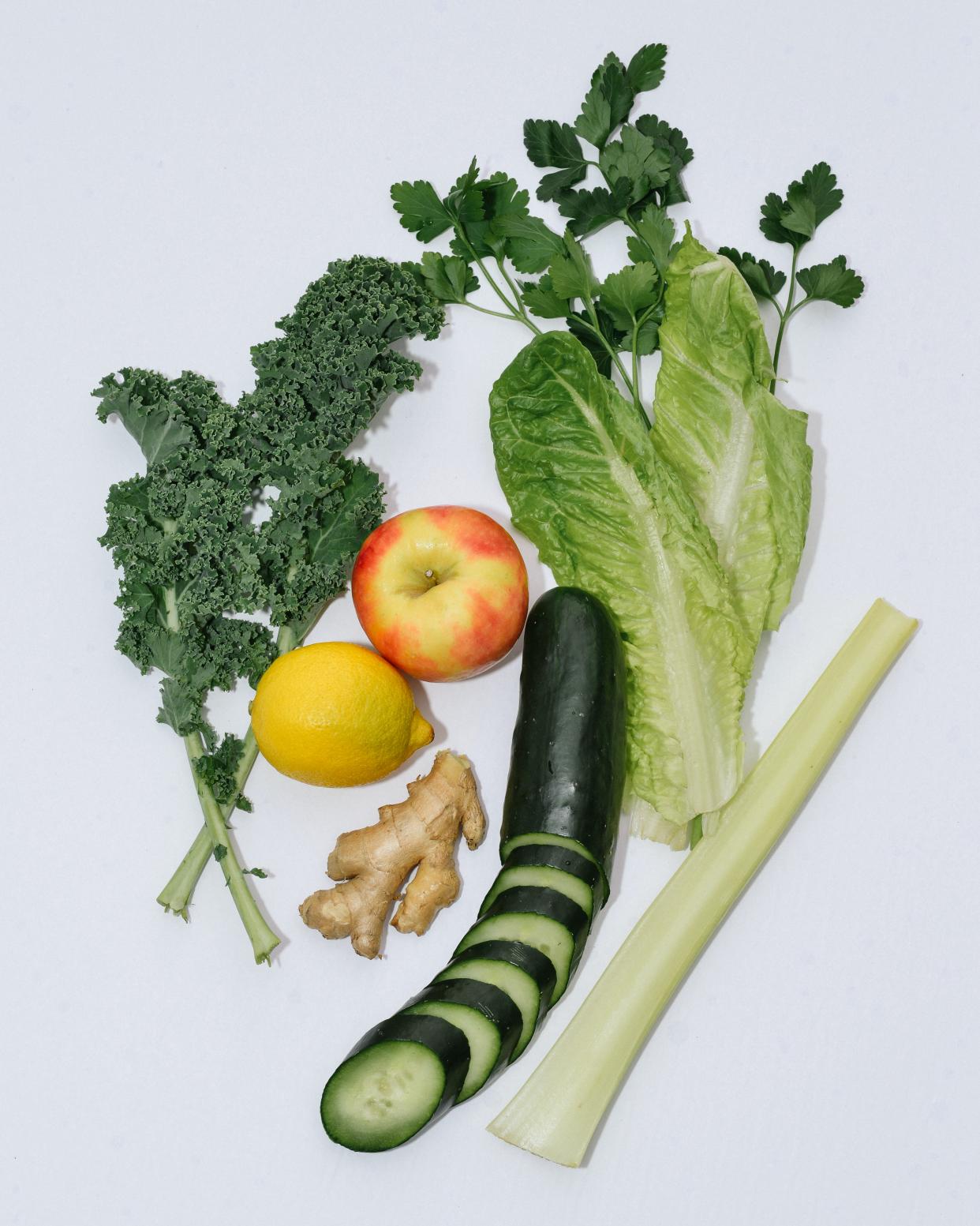
Celery leaves are pinnate to bipinnate with rhombic leaflets 3–6 cm (1.2–2.4 in) long and 2–4 cm (0.79–1.57 in) broad. The flowers are creamy-white, 2–3 mm (0.079–0.118 in) in diameter, and are produced in dense compound umbels. The seeds are broad ovoid to globose, 1.5–2 mm (0.059–0.079 in) long and wide. Modern cultivars have been selected for solid petioles, leaf stalks. A celery stalk readily separates into "strings" which are bundles of angular collenchyma cells exterior to the vascular bundles.
Wild celery, Apium graveolens var. graveolens, grows to 1 m (3.3 ft) tall. It occurs around the globe. The first cultivation is thought to have happened in the Mediterranean region, where the natural habitats were salty and wet, or marshy soils near the coast where celery grew in agropyro-rumicion-plant communities.

North of the Alps, wild celery is found only in the foothill zone on soils with some salt content. It prefers moist or wet, nutrient rich, muddy soils. It cannot be found in Austria and is increasingly rare in Germany.
The plants are raised from seed, sown either in a hot bed or in the open garden according to the season of the year, and, after one or two thinnings and transplantings, they are, on attaining a height of 15–20 cm (5.9–7.9 in), planted out in deep trenches for convenience of blanching, which is effected by earthing up to exclude light from the stems.
Celery was first grown as a winter and early spring vegetable. It was considered a cleansing tonic to counter the deficiencies of a winter diet based on salted meats without fresh vegetables. By the 19th century, the season for celery in England had been extended, to last from the beginning of September to late in April.
Celery is used in weight loss diets, where it provides low-calorie dietary fiber bulk. Celery is often incorrectly thought to be a "negative-calorie food", the digestion of which burns more calories than the body can obtain. In fact, eating celery provides positive net calories, with digestion consuming only a small proportion of the calories taken in.

0
1
文章
ritau
2020年04月27日

If you're searching for the perfect indoor plant, you can't go wrong with an areca palm (Dypsis lutescens), which also goes by the names butterfly palm, yellow palm, or golden cane palm. Areca palms are a beautiful tropical plant that can grow up to 6 to 8 ft (1.8 to 2.4 m) tall indoors or up to 25 ft (7.6 m) tall outdoors. Since the plant is nonpoisonous, it’s a great option for homes with children and pets. As an added bonus, areca palms help clean the air in your home!With proper care, your areca palm can thrive for up to 10 years.
1. Use a well-draining, acidic soil that doesn’t clump up. Get a potting mix or outdoor soil from your local gardening store or online. Check that the soil is labeled as well-draining and acidic so your palm can thrive. Break up the soil before you plant your areca palm so you know it’ll be loose around the roots.

2. Plant the palm in a well-draining pot that’s twice the size of the root ball. Choose a pot that has drainage holes in the bottom so that the plant doesn’t become water-logged. Fill the pot 2/3 of the way with potting soil. Place your root ball in the center of the pot, then cover it with more potting soil. Pat the surface of the soil gently to settle the plant but don’t pack it down around the root ball.
3. Put your areca palm in the ground only if you live in USDA zones 10 or 11. Areca palms are commonly grown as a houseplant, but you may want to grow yours outside if your area is hot and humid. Check that your region is in a USDA zone 10 or 11. If so, plant it directly in the ground if you prefer.
4. Put your areca palm in a spot where it gets bright, indirect light. Areca palms need good lighting to thrive, but direct light can hurt your plant’s fronds. Pick a spot near a window or glass door where the light filters into the room. Place your plant where it’s in an indirect beam or near direct sunlight.
5. Maintain a temperature that’s between 55 to 75 °F (13 to 24 °C). Areca palms thrive best when the daytime temperature is 65 to 75 °F (18 to 24 °C) and the nighttime temperature is around 55 °F (13 °C). For indoor areca palms, adjust your thermostat so the room temperature stays ideal. If your plant is outdoors, bring it inside on days that are very hot or very cold. Via. WikiHow
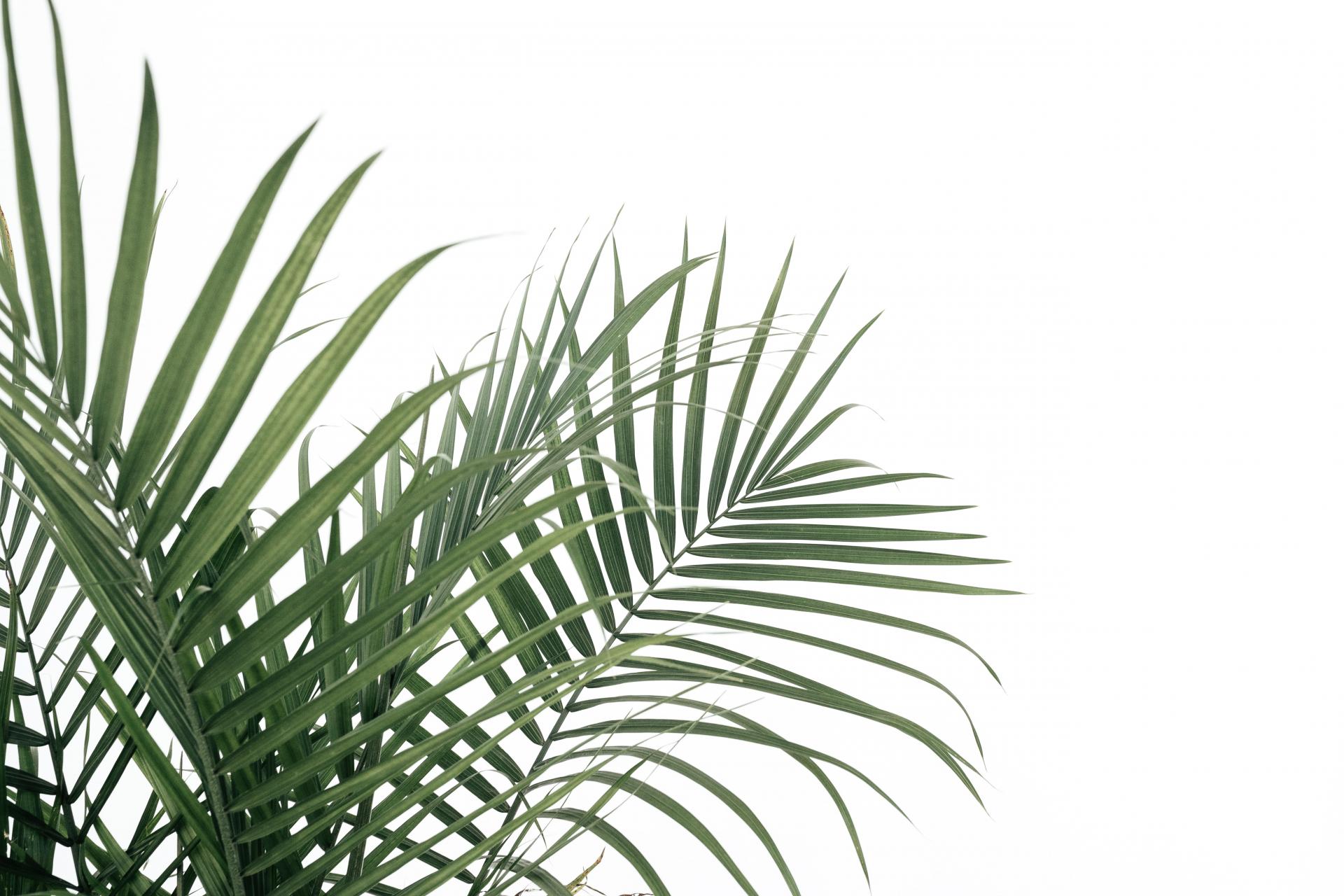
1. Use a well-draining, acidic soil that doesn’t clump up. Get a potting mix or outdoor soil from your local gardening store or online. Check that the soil is labeled as well-draining and acidic so your palm can thrive. Break up the soil before you plant your areca palm so you know it’ll be loose around the roots.

2. Plant the palm in a well-draining pot that’s twice the size of the root ball. Choose a pot that has drainage holes in the bottom so that the plant doesn’t become water-logged. Fill the pot 2/3 of the way with potting soil. Place your root ball in the center of the pot, then cover it with more potting soil. Pat the surface of the soil gently to settle the plant but don’t pack it down around the root ball.
3. Put your areca palm in the ground only if you live in USDA zones 10 or 11. Areca palms are commonly grown as a houseplant, but you may want to grow yours outside if your area is hot and humid. Check that your region is in a USDA zone 10 or 11. If so, plant it directly in the ground if you prefer.
4. Put your areca palm in a spot where it gets bright, indirect light. Areca palms need good lighting to thrive, but direct light can hurt your plant’s fronds. Pick a spot near a window or glass door where the light filters into the room. Place your plant where it’s in an indirect beam or near direct sunlight.
5. Maintain a temperature that’s between 55 to 75 °F (13 to 24 °C). Areca palms thrive best when the daytime temperature is 65 to 75 °F (18 to 24 °C) and the nighttime temperature is around 55 °F (13 °C). For indoor areca palms, adjust your thermostat so the room temperature stays ideal. If your plant is outdoors, bring it inside on days that are very hot or very cold. Via. WikiHow

0
0
文章
ritau
2020年04月23日

Crassula ovata, commonly known as jade plant, lucky plant, money plant or money tree, is a succulent plant with small pink or white flowers that is native to the KwaZulu-Natal province and Eastern Cape of South Africa and Mozambique, and is common as a houseplant worldwide. Much of its popularity stems from the low levels of care needed; the jade plant requires little water and can survive in most indoor conditions. It is sometimes referred to as the money tree; however, Pachira aquatica also has this nickname.
The jade plant is an evergreen with thick branches. It has thick, shiny, smooth leaves that grow in opposing pairs along the branches. Leaves are a rich jade green, although some may appear to be more of a yellow-green. Some varieties may develop a red tinge on the edges of leaves when exposed to high levels of sunlight. New stem growth is the same colour and texture as the leaves, becoming woody and brown with age.
It grows as an upright, rounded, thick-stemmed, strongly branched, evergreen shrub and reaches stature heights of up to 2.5 meters. The base is usually sparsely branched. Sometimes a single main trunk of up to 6 centimetres in diameter is formed. The succulent shoots are gray-green. The bark of older branches peels off in horizontal, brownish stripes.
The oppositely arranged, ascending to spreading, green leaves are stalked with up to 5 millimetres short. The fleshy, bare, obovate, wedge-shaped leaf blade is 3 to 9 centimetres long and 1.8 to 4 centimetres wide. The sharp-edged leaf margins are often reddish.
Numerous varieties and cultivars have been selected, of which C. ovata 'Hummel's Sunset' has gained the Royal Horticultural Society's Award of Garden Merit.

Although becoming brown and appearing woody with age, stems never become true lignified tissue, remaining succulent and fleshy throughout the plant's life. Under the right conditions, they may produce small white or pink, star-like shaped flowers in winter. The terminal inflorescence is a top round thyrsus with numerous dichasia. It has a length and a diameter of about 5 centimetres. The inflorescence stem has a length of 15 to 18 millimetres and a diameter of 2 millimetres. The flower stalks are 5 millimetres long.
The sweet-scented, hermaphrodite flowers are radial symmetry and double perianth. The five about 2 millimetres long sepals are fused to one another at their base. The pink or white flower crown is star-shaped and has a diameter of about 15 millimetres. Its lanceolate petals are 7 millimetres long and 2.5 millimetres wide. The stamens have a length of 5 millimetres. The combination of shorter days, cold nights and lack of water for several weeks will produce flowering around the beginning of winter.
As a succulent, Crassula ovata requires little water in the summer, and even less in the winter. It is susceptible to overwatering, especially during the cold season. Watering excessively can cause leaf fall and root rot. However, also the lack of water can damage it. It should be grown in a porous substrate with good drainage, which will vary depending on the climate it is grown in. It requires about 4-6 hours of direct sun, or medium shade exposures with bright light. In regions of mild weather it can withstand some light frost, provided that the substrate is kept dry.
C. ovata may display a red tinge around its leaves when grown with bright sunlight. In more extreme cases, the green colour of the plant is lost and can be replaced by yellow. This is caused by the jade plant making pigments such as carotenoids to protect from harsh sunlight and ultraviolet rays. The jade plant also does best in rich, well-draining soil. The plant also flowers in the wintertime, particularly during a cooler, darker, dry spell. C. ovata is sometimes attacked by mealybugs, a common nuisance of the succulents.

The jade plant is well known for its bonsai capabilities, since it forms a bonsai very easily when pruning is done correctly. Many who learn bonsai begin with a jade plant, since they are durable, easy to put through the bonsai process, and attractive.
The jade plant is an evergreen with thick branches. It has thick, shiny, smooth leaves that grow in opposing pairs along the branches. Leaves are a rich jade green, although some may appear to be more of a yellow-green. Some varieties may develop a red tinge on the edges of leaves when exposed to high levels of sunlight. New stem growth is the same colour and texture as the leaves, becoming woody and brown with age.
It grows as an upright, rounded, thick-stemmed, strongly branched, evergreen shrub and reaches stature heights of up to 2.5 meters. The base is usually sparsely branched. Sometimes a single main trunk of up to 6 centimetres in diameter is formed. The succulent shoots are gray-green. The bark of older branches peels off in horizontal, brownish stripes.
The oppositely arranged, ascending to spreading, green leaves are stalked with up to 5 millimetres short. The fleshy, bare, obovate, wedge-shaped leaf blade is 3 to 9 centimetres long and 1.8 to 4 centimetres wide. The sharp-edged leaf margins are often reddish.
Numerous varieties and cultivars have been selected, of which C. ovata 'Hummel's Sunset' has gained the Royal Horticultural Society's Award of Garden Merit.

Although becoming brown and appearing woody with age, stems never become true lignified tissue, remaining succulent and fleshy throughout the plant's life. Under the right conditions, they may produce small white or pink, star-like shaped flowers in winter. The terminal inflorescence is a top round thyrsus with numerous dichasia. It has a length and a diameter of about 5 centimetres. The inflorescence stem has a length of 15 to 18 millimetres and a diameter of 2 millimetres. The flower stalks are 5 millimetres long.
The sweet-scented, hermaphrodite flowers are radial symmetry and double perianth. The five about 2 millimetres long sepals are fused to one another at their base. The pink or white flower crown is star-shaped and has a diameter of about 15 millimetres. Its lanceolate petals are 7 millimetres long and 2.5 millimetres wide. The stamens have a length of 5 millimetres. The combination of shorter days, cold nights and lack of water for several weeks will produce flowering around the beginning of winter.
As a succulent, Crassula ovata requires little water in the summer, and even less in the winter. It is susceptible to overwatering, especially during the cold season. Watering excessively can cause leaf fall and root rot. However, also the lack of water can damage it. It should be grown in a porous substrate with good drainage, which will vary depending on the climate it is grown in. It requires about 4-6 hours of direct sun, or medium shade exposures with bright light. In regions of mild weather it can withstand some light frost, provided that the substrate is kept dry.
C. ovata may display a red tinge around its leaves when grown with bright sunlight. In more extreme cases, the green colour of the plant is lost and can be replaced by yellow. This is caused by the jade plant making pigments such as carotenoids to protect from harsh sunlight and ultraviolet rays. The jade plant also does best in rich, well-draining soil. The plant also flowers in the wintertime, particularly during a cooler, darker, dry spell. C. ovata is sometimes attacked by mealybugs, a common nuisance of the succulents.

The jade plant is well known for its bonsai capabilities, since it forms a bonsai very easily when pruning is done correctly. Many who learn bonsai begin with a jade plant, since they are durable, easy to put through the bonsai process, and attractive.
0
0




